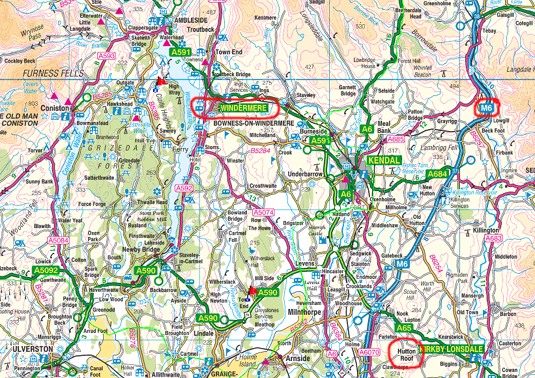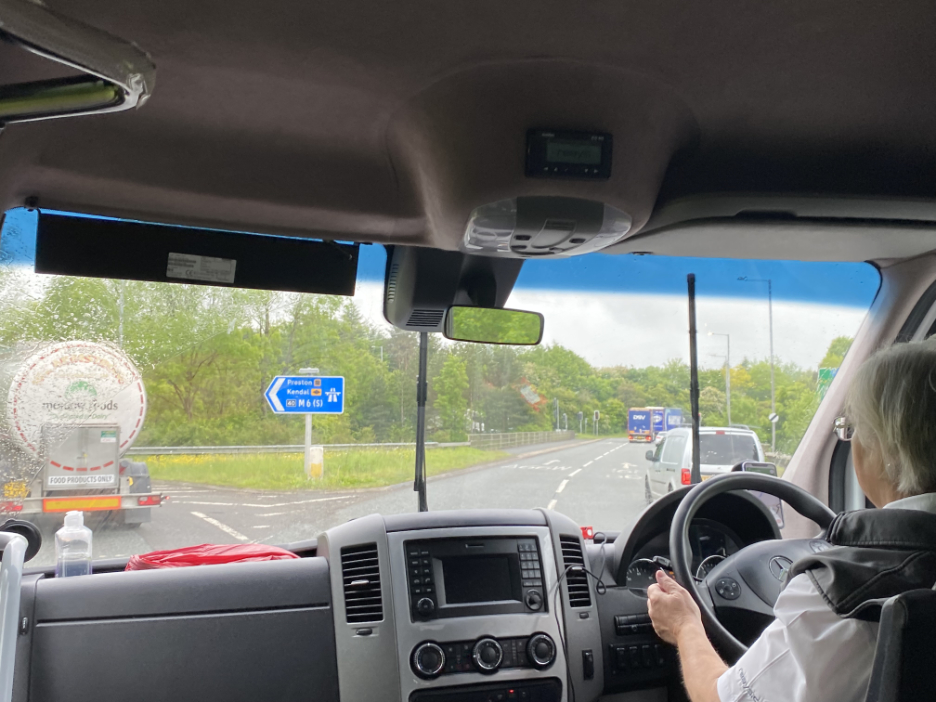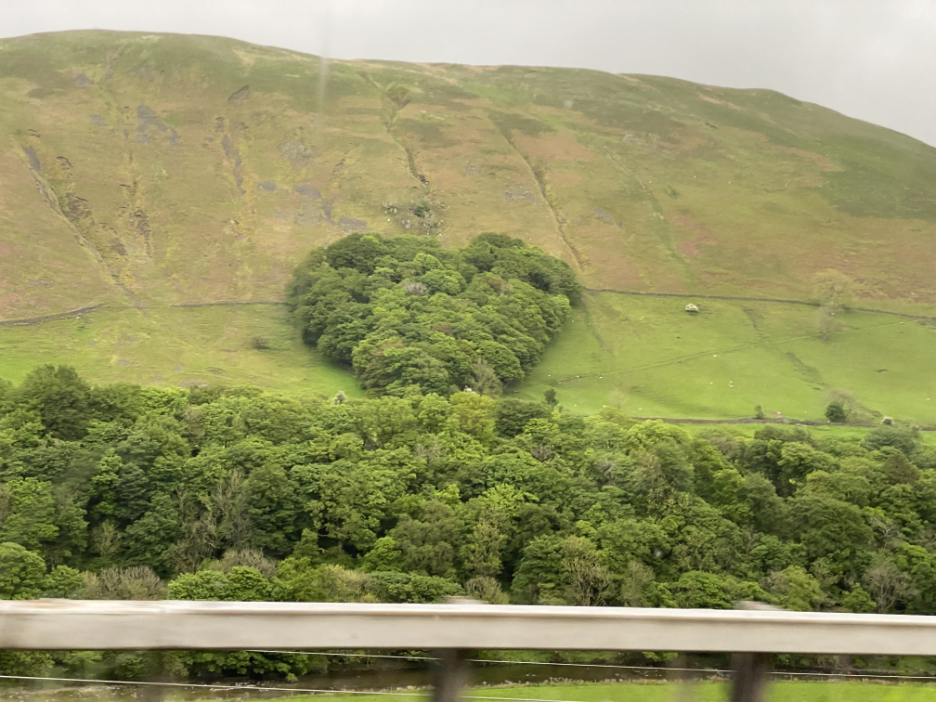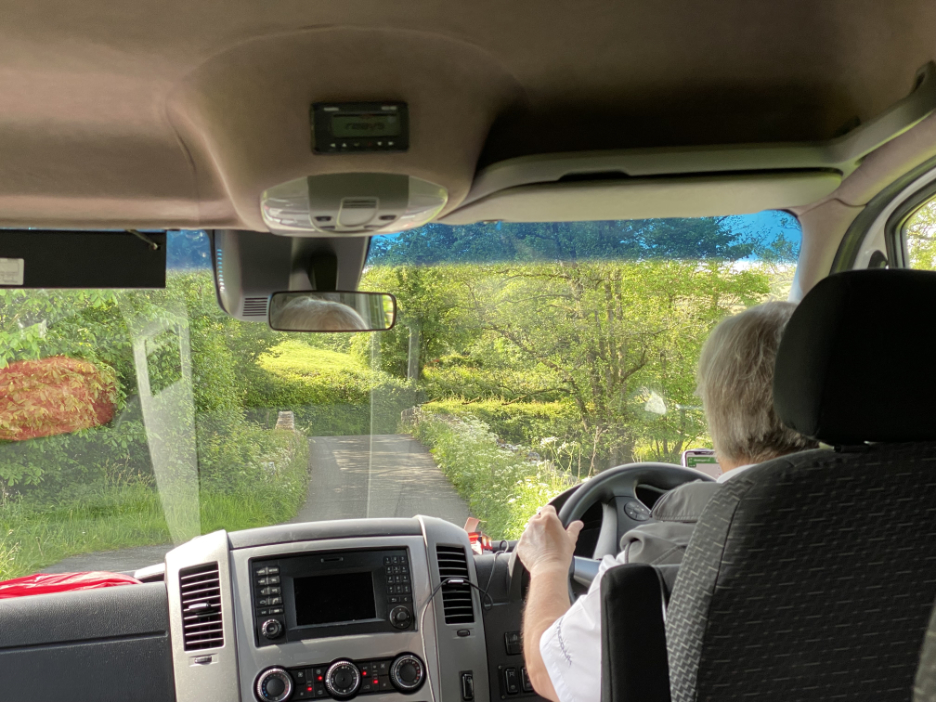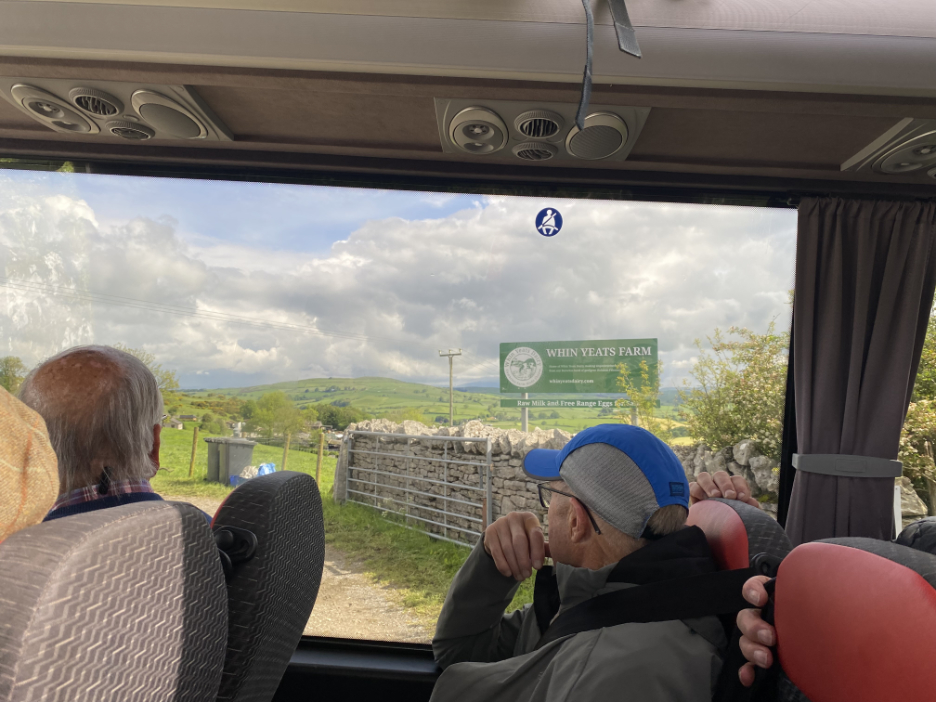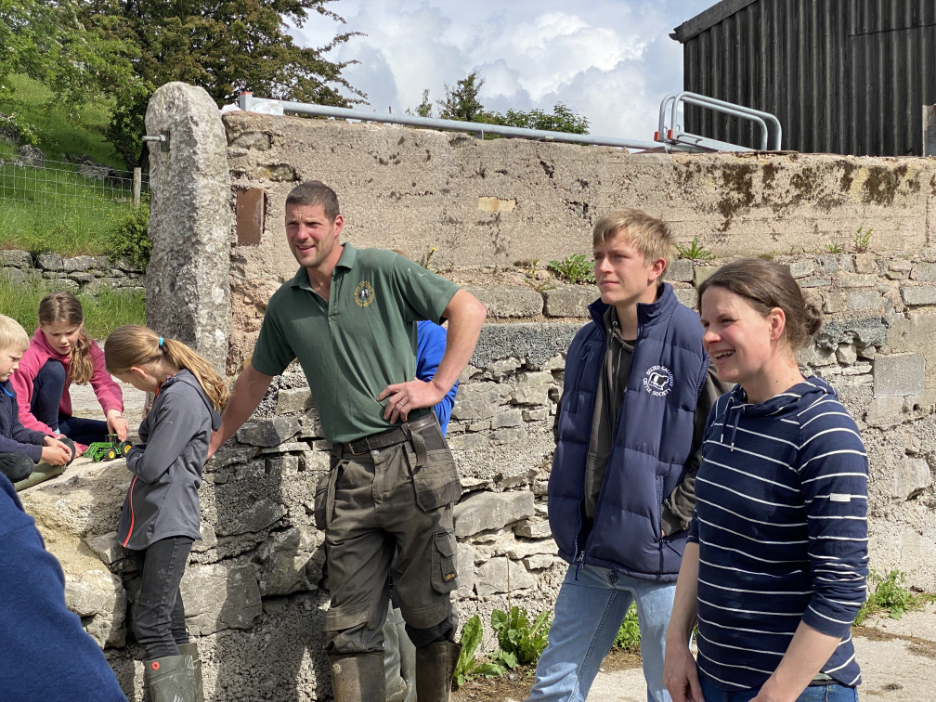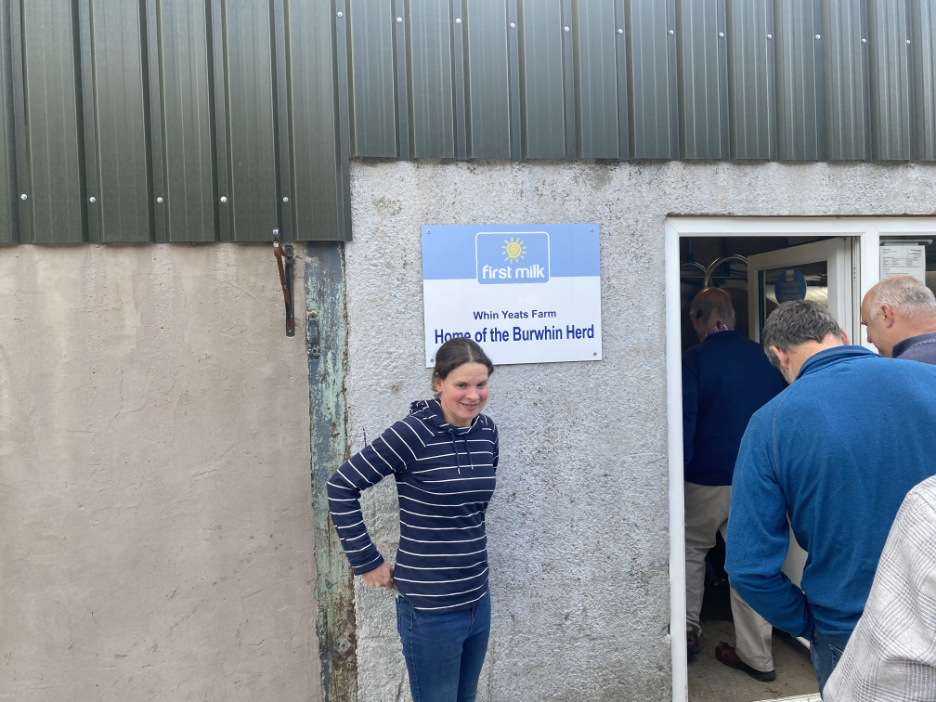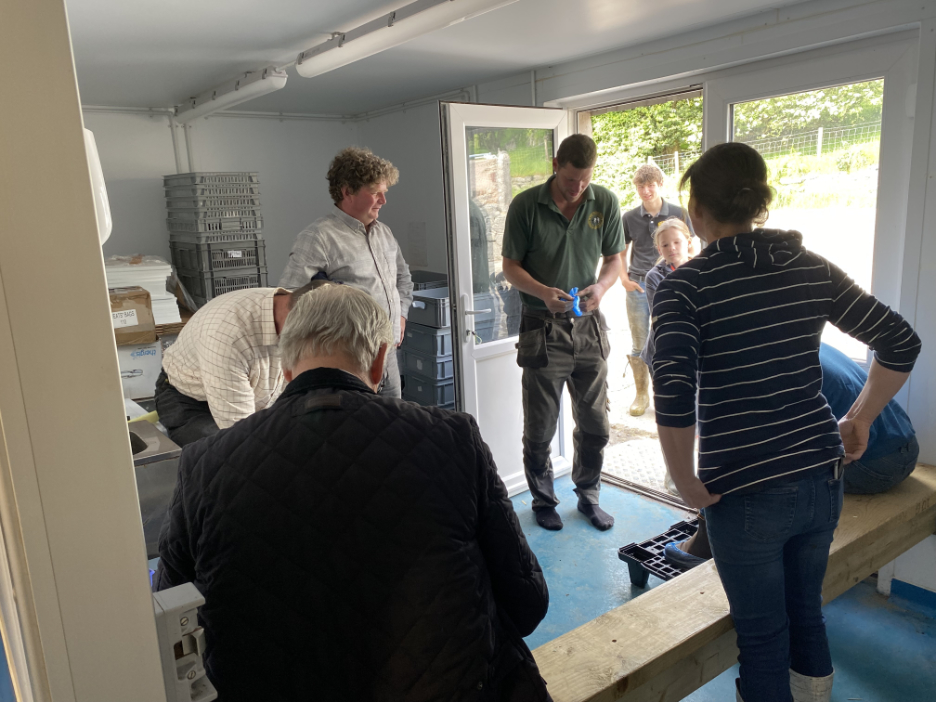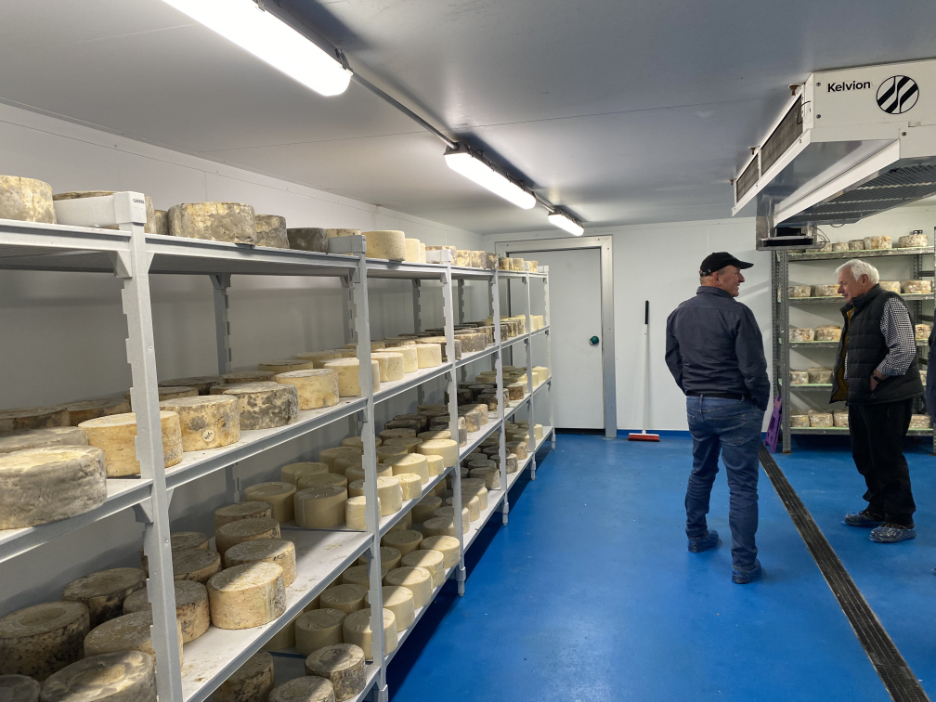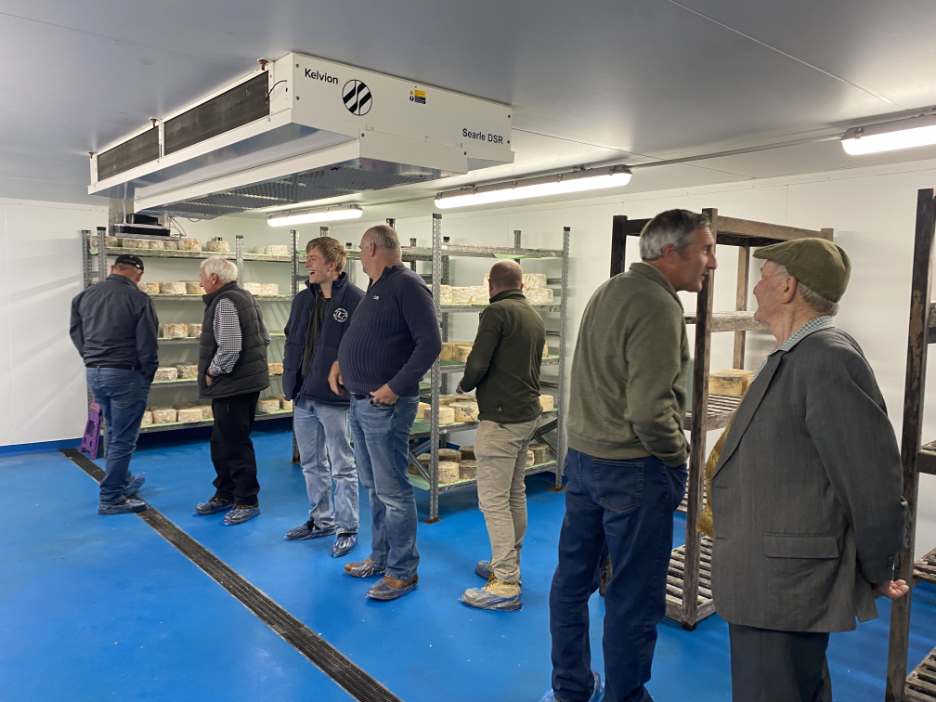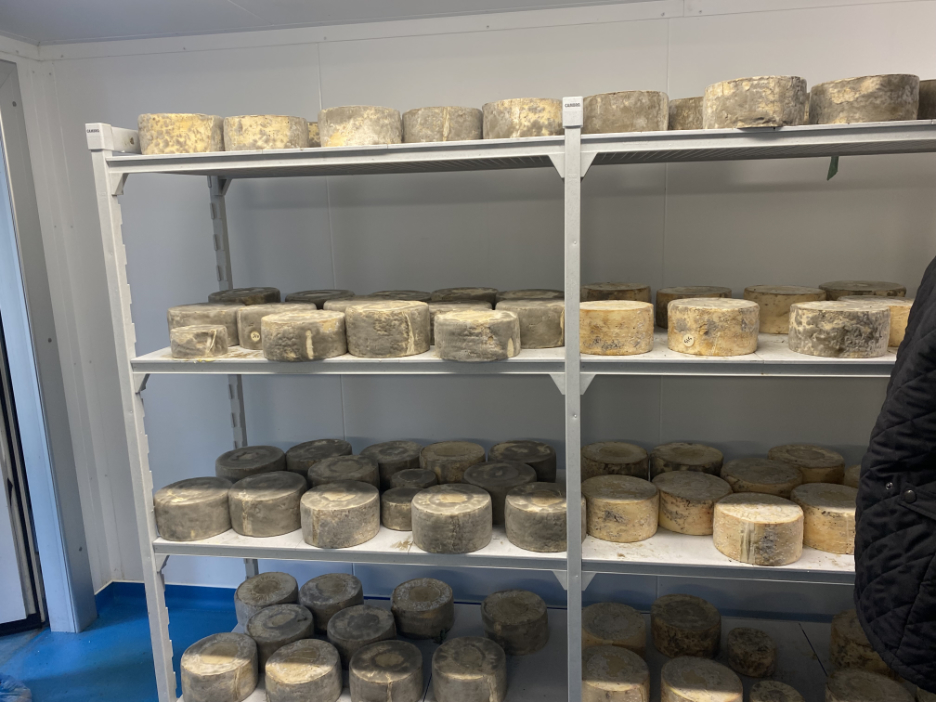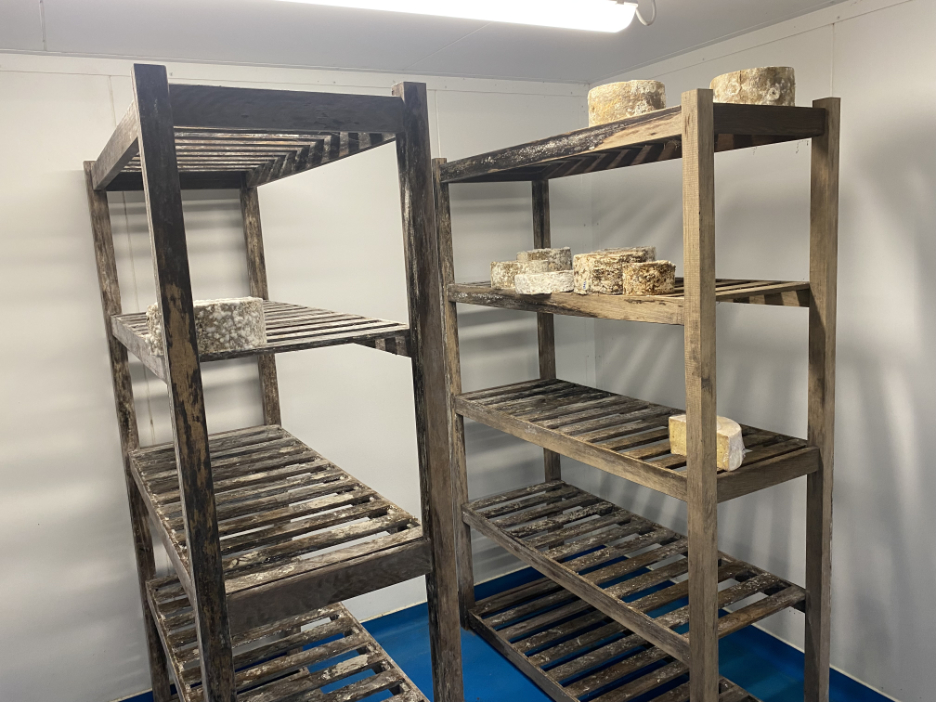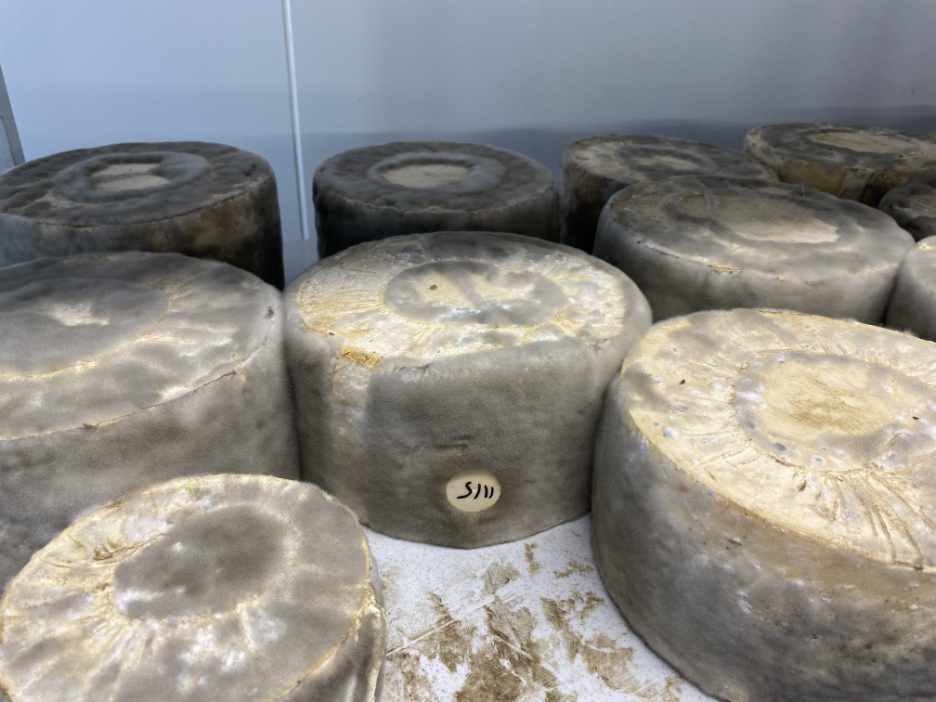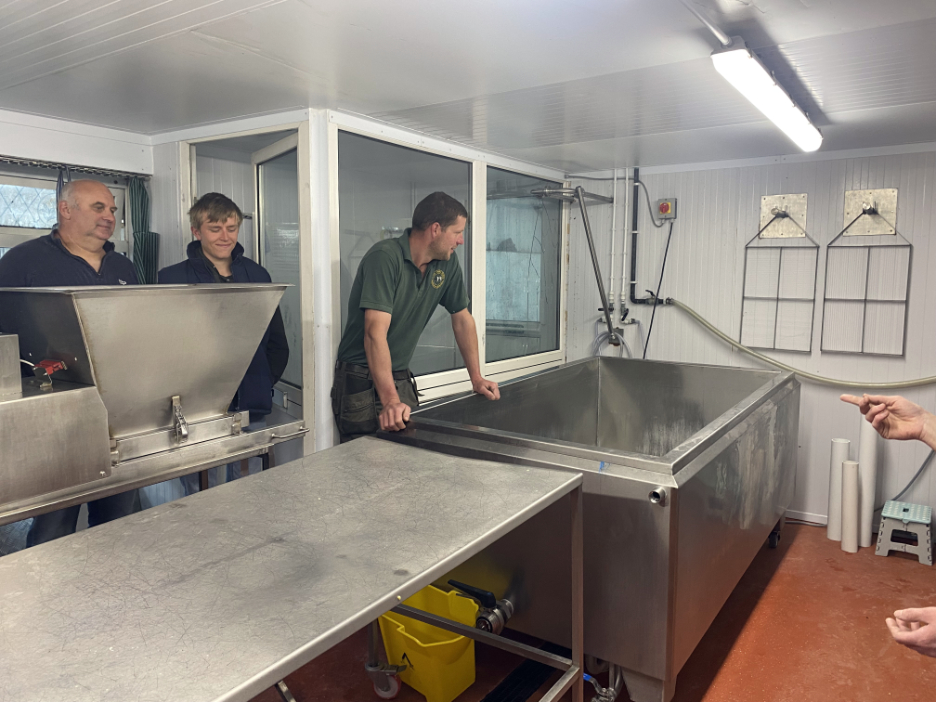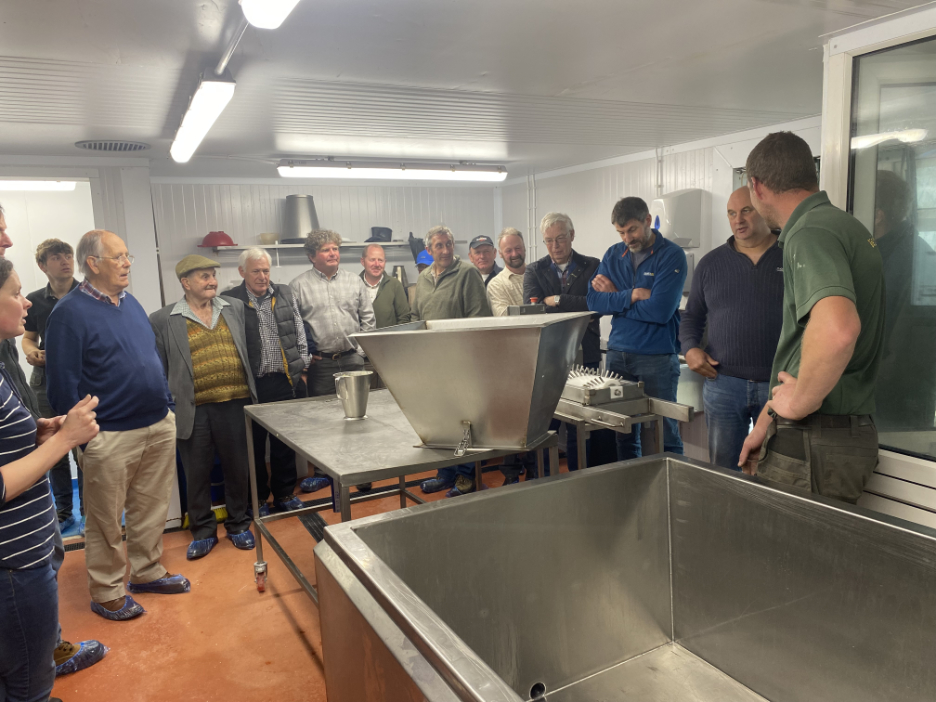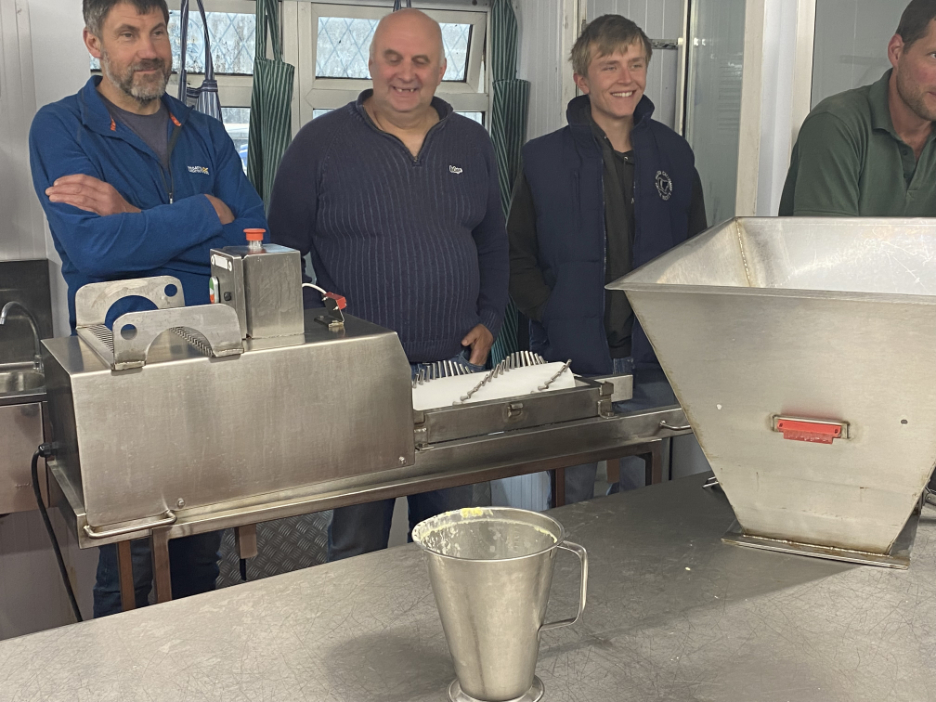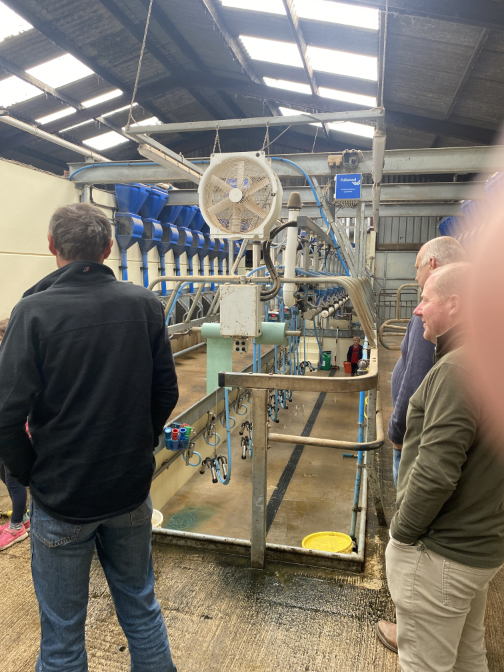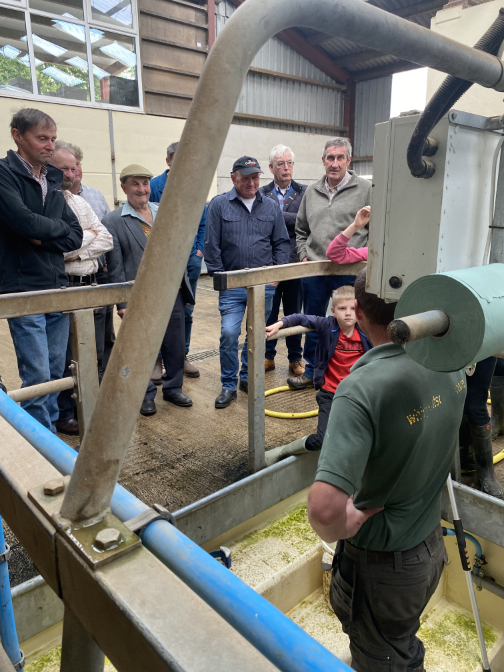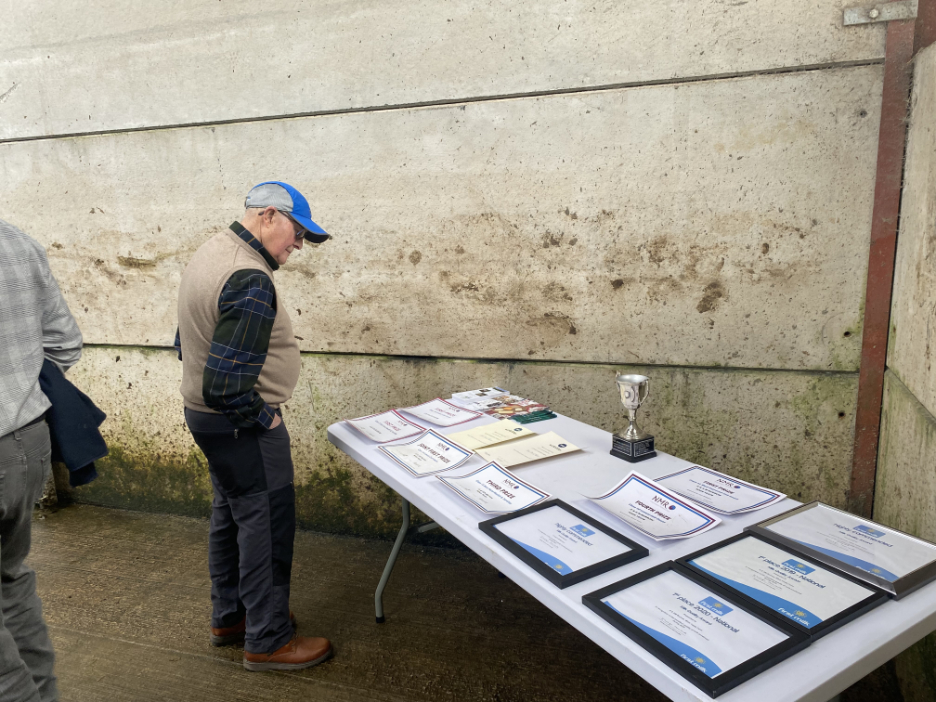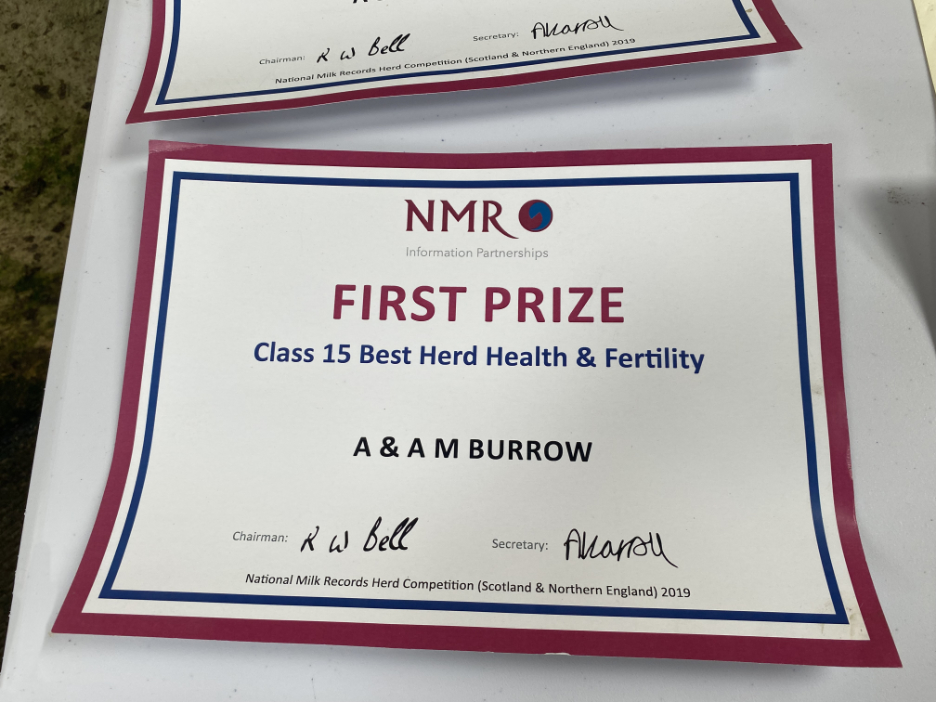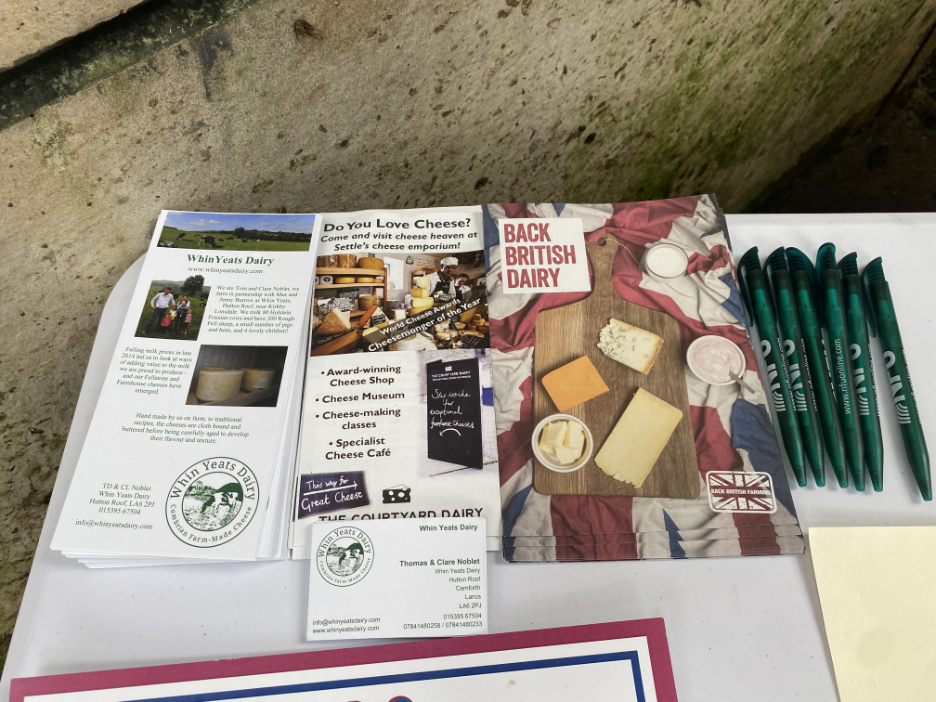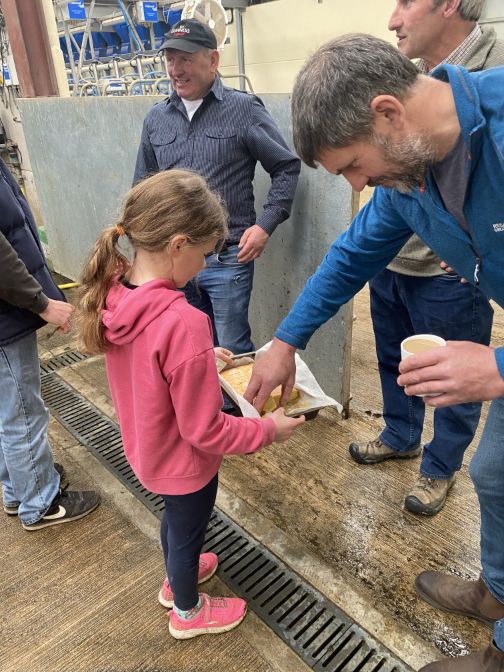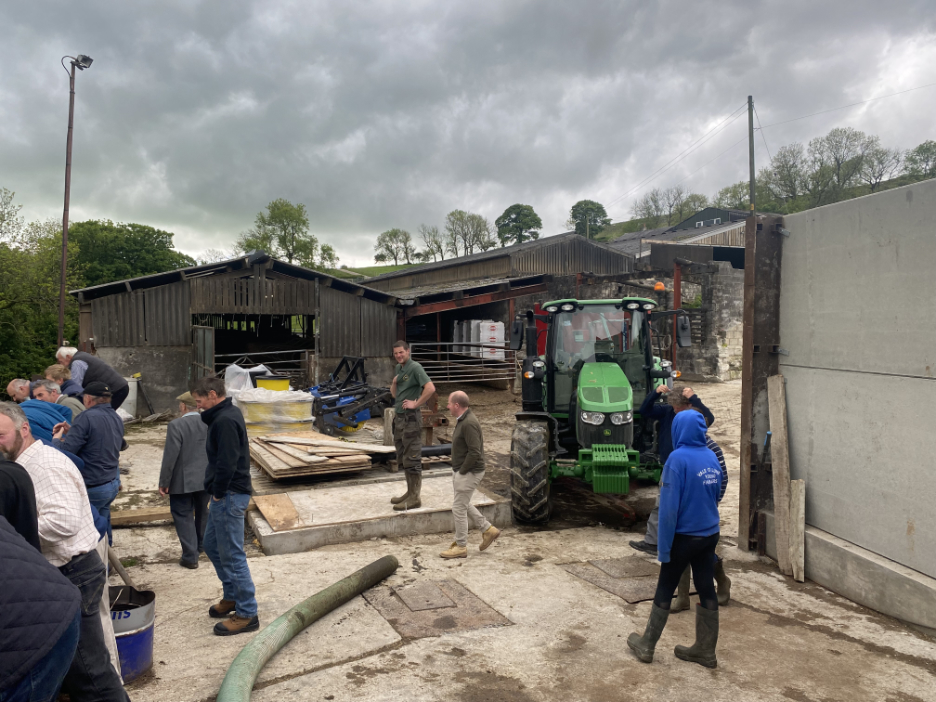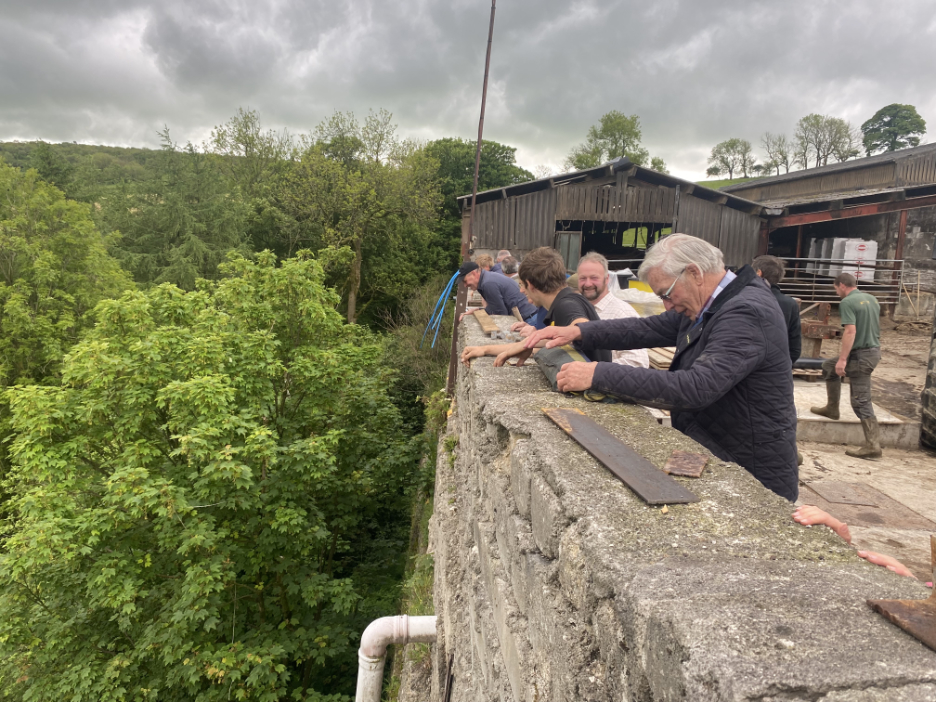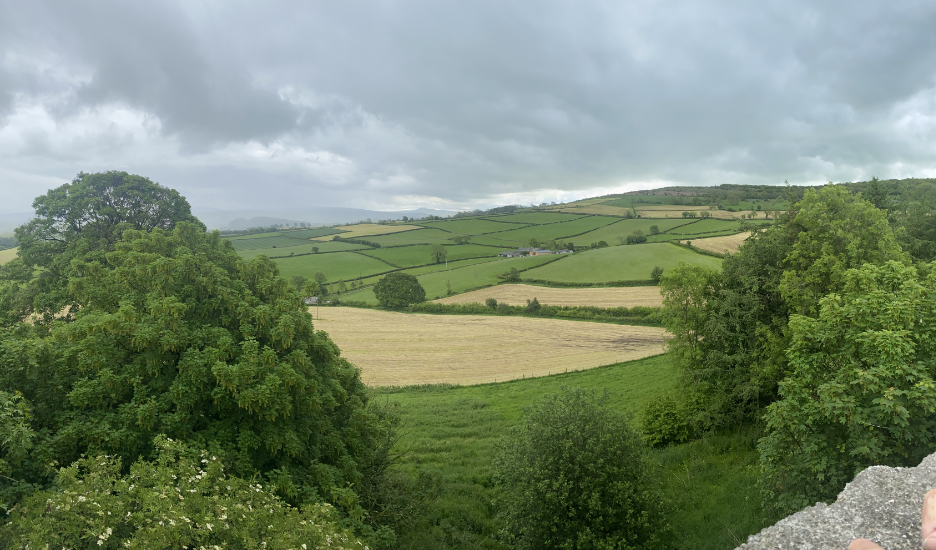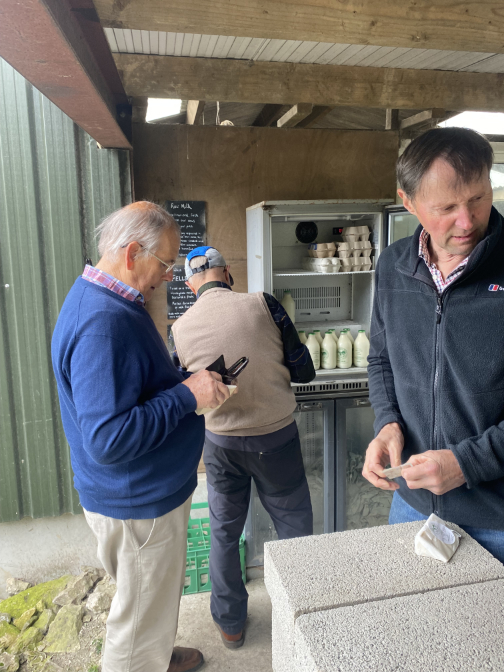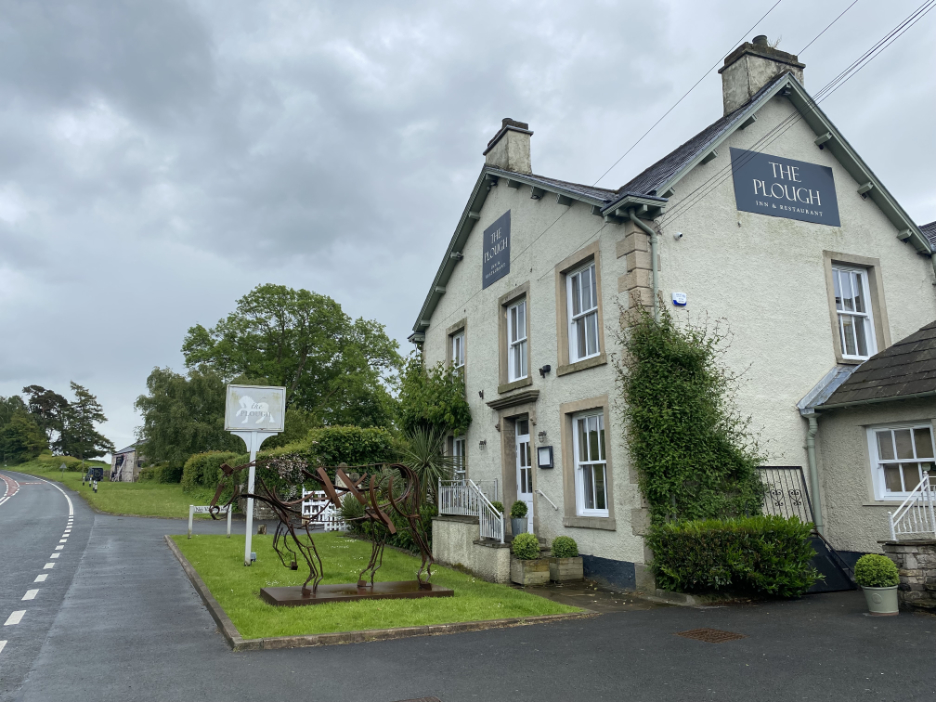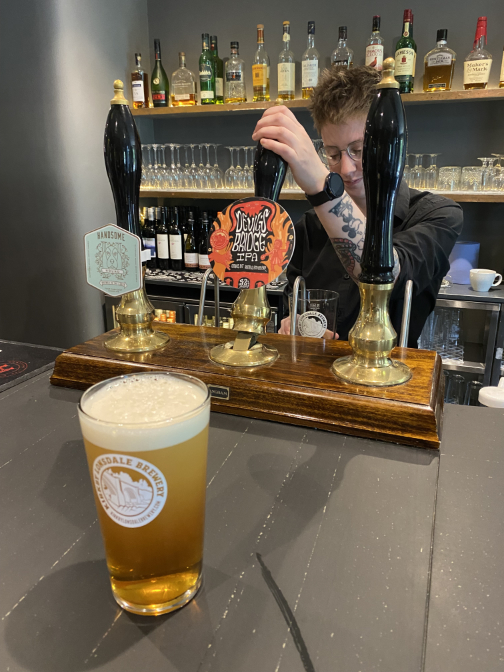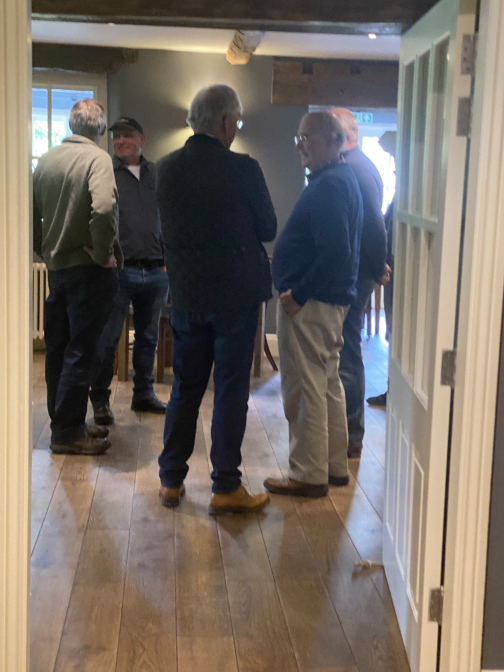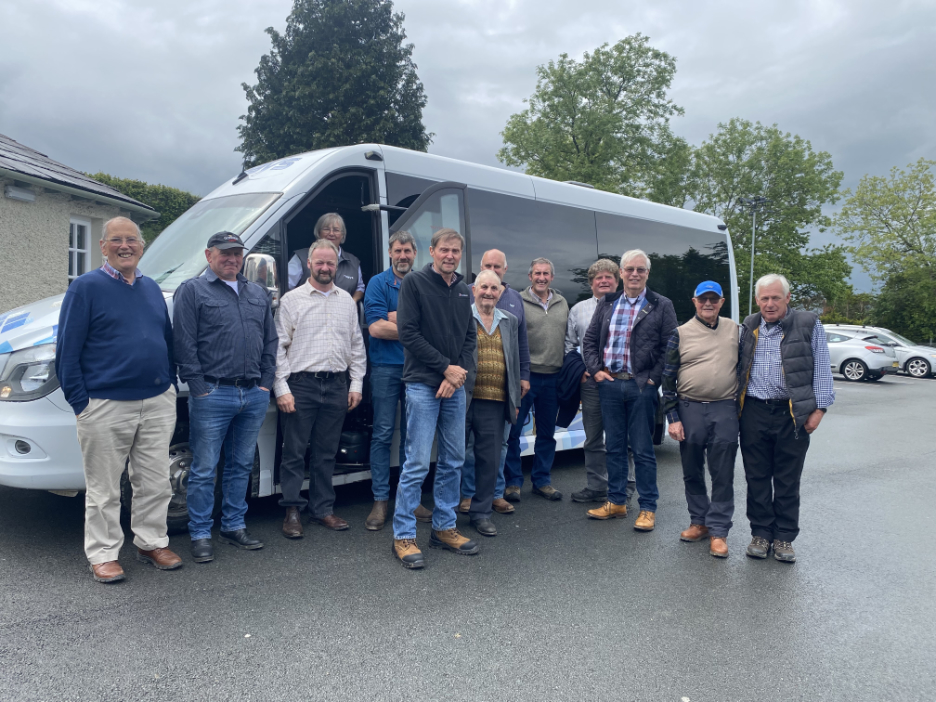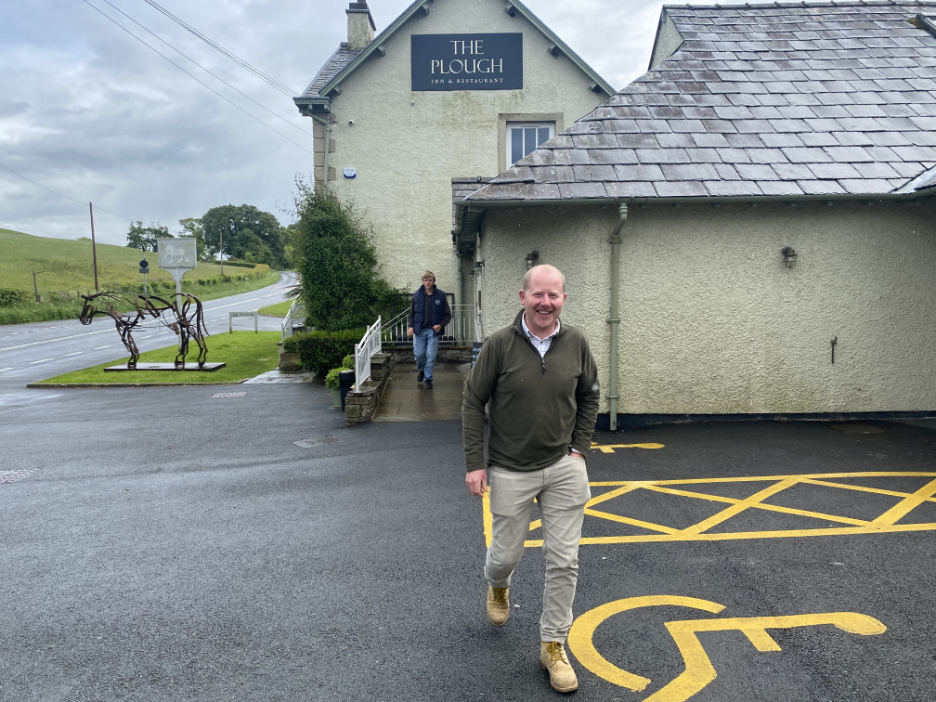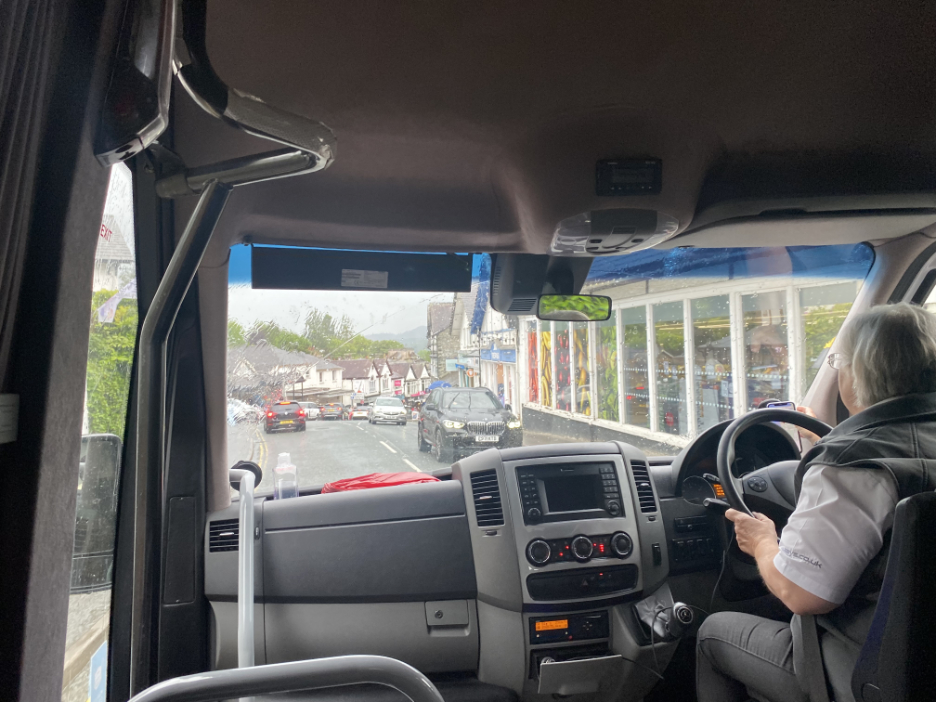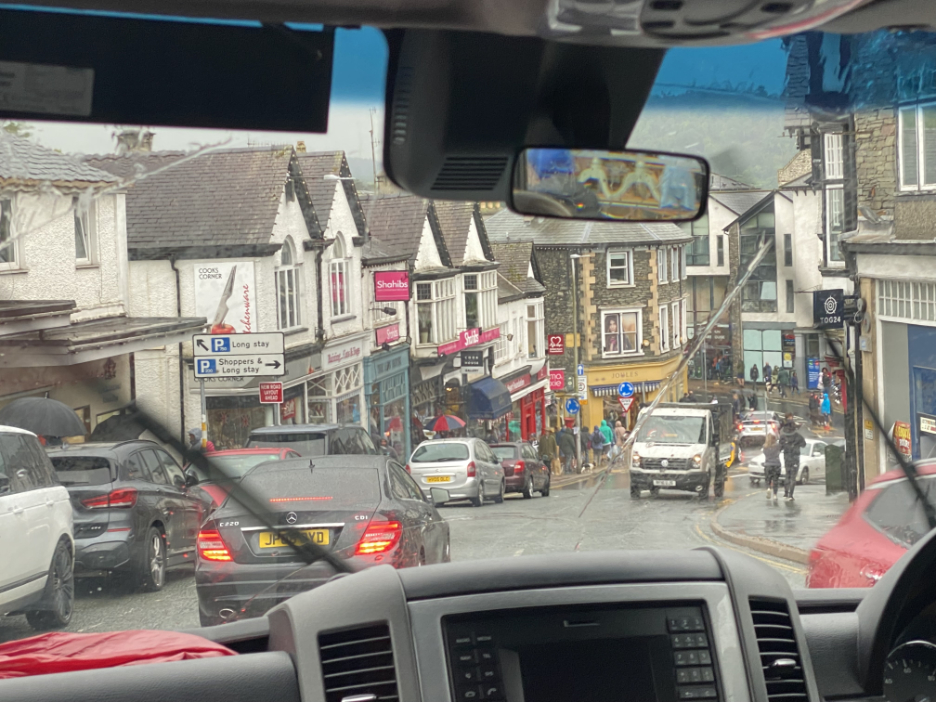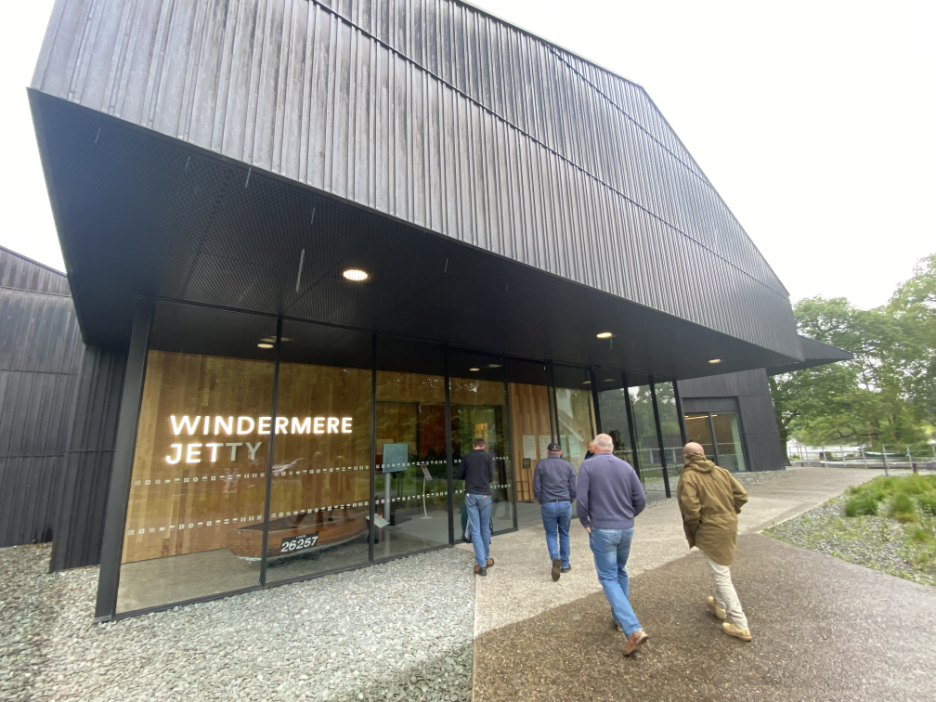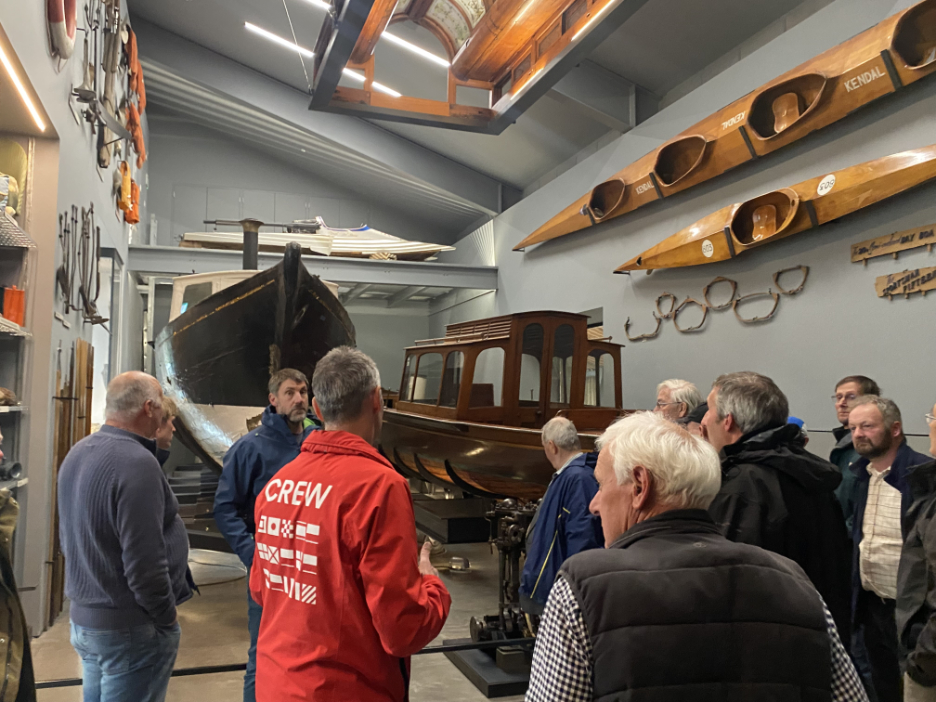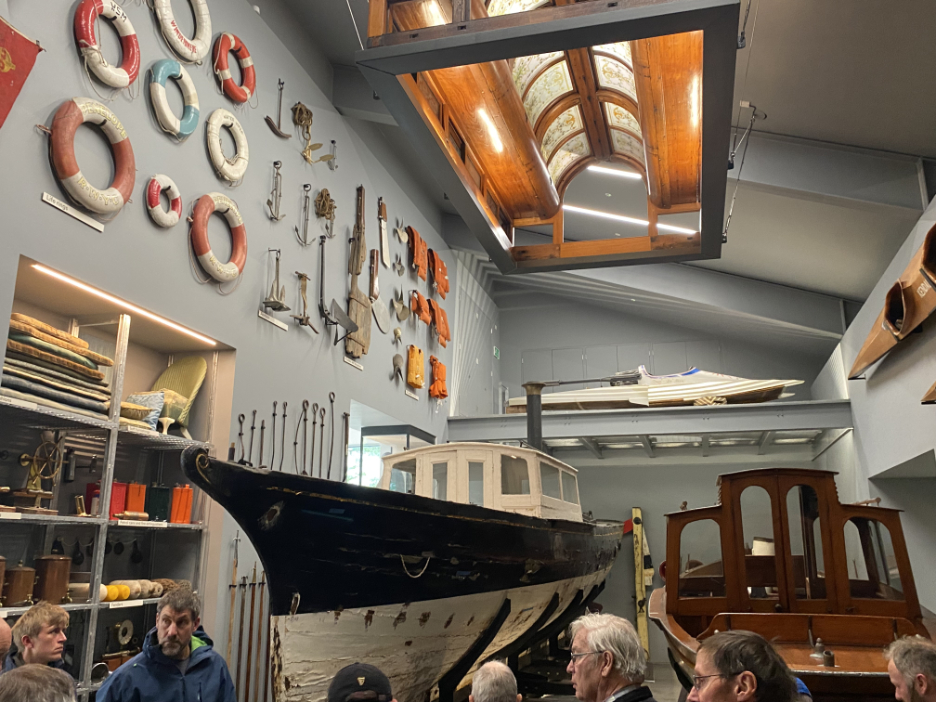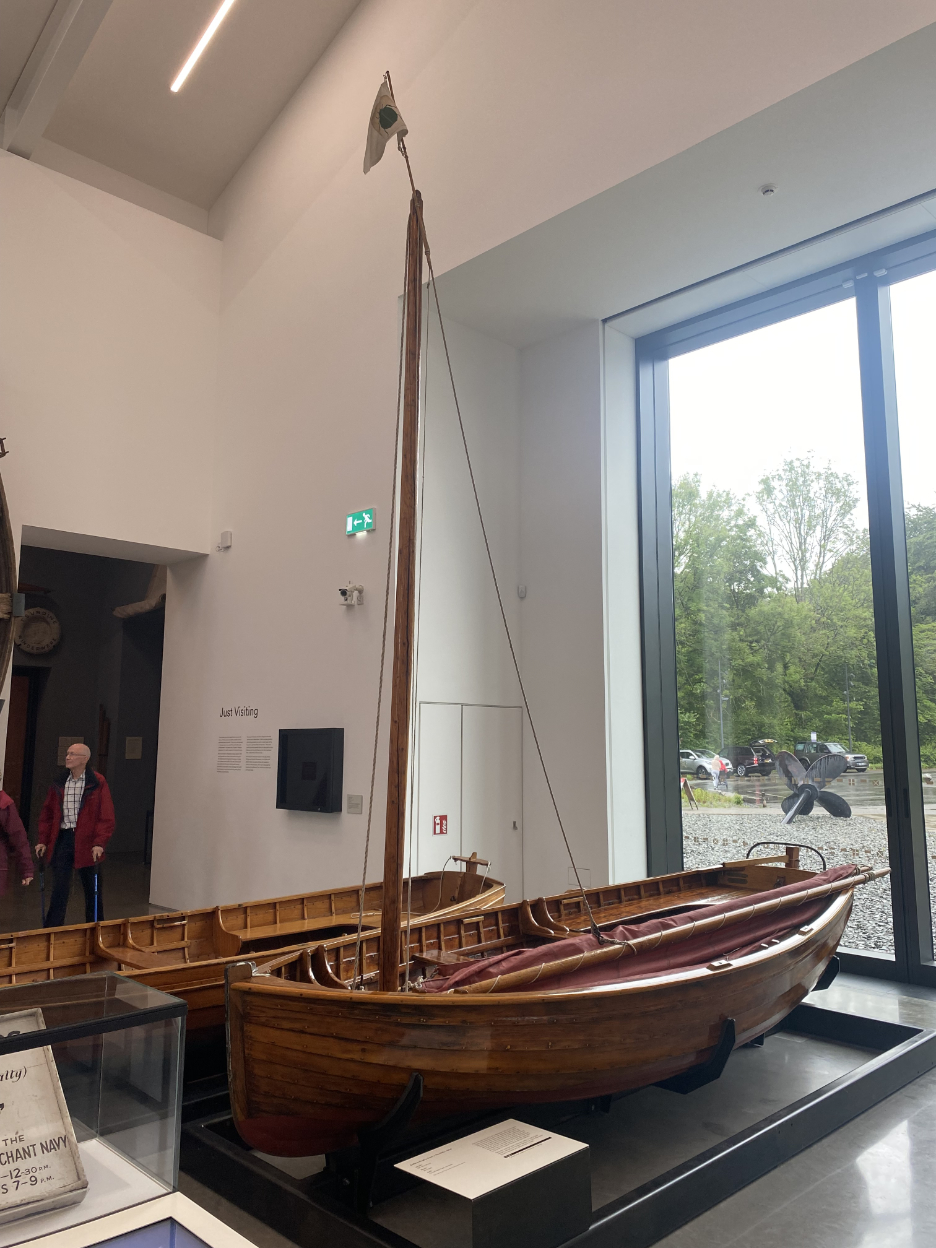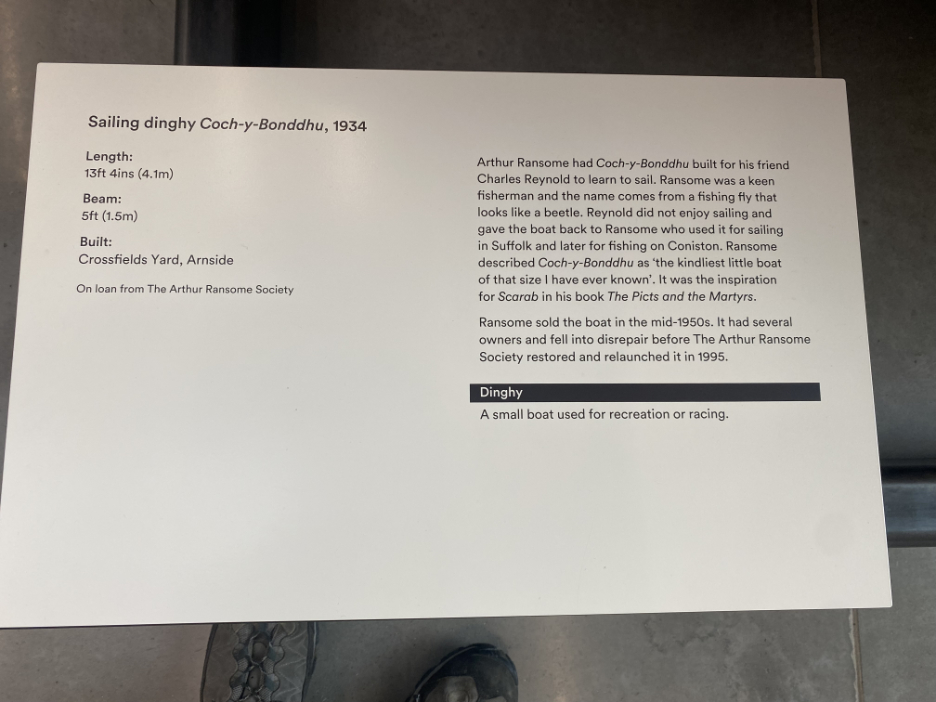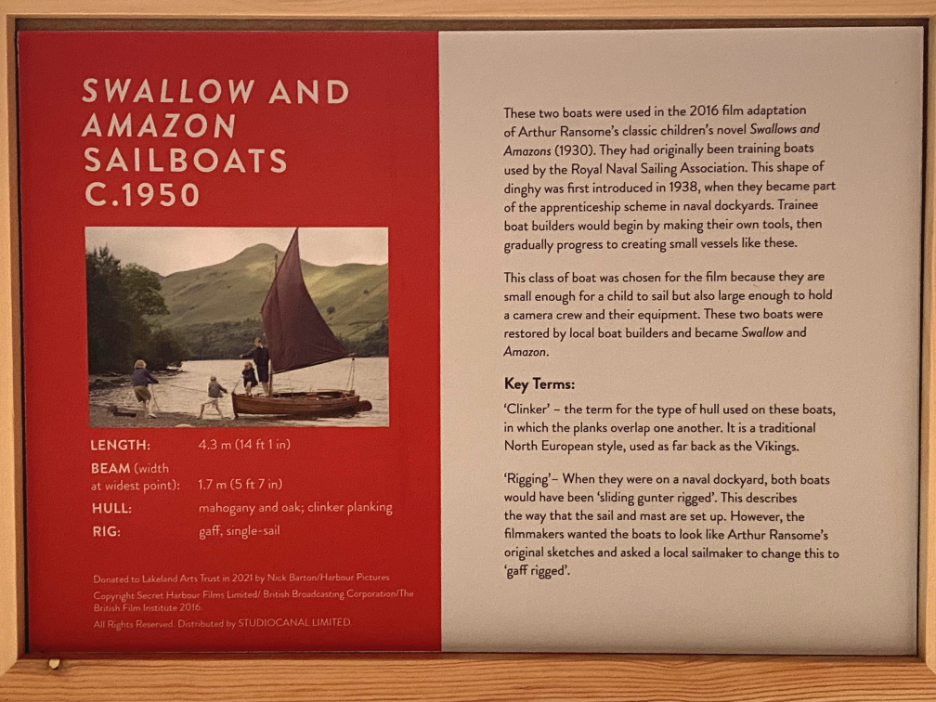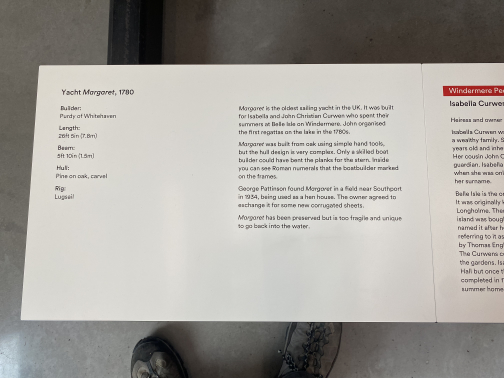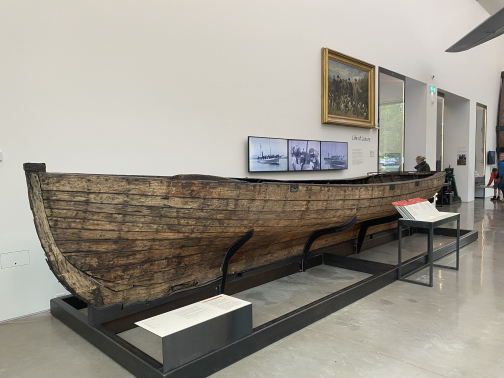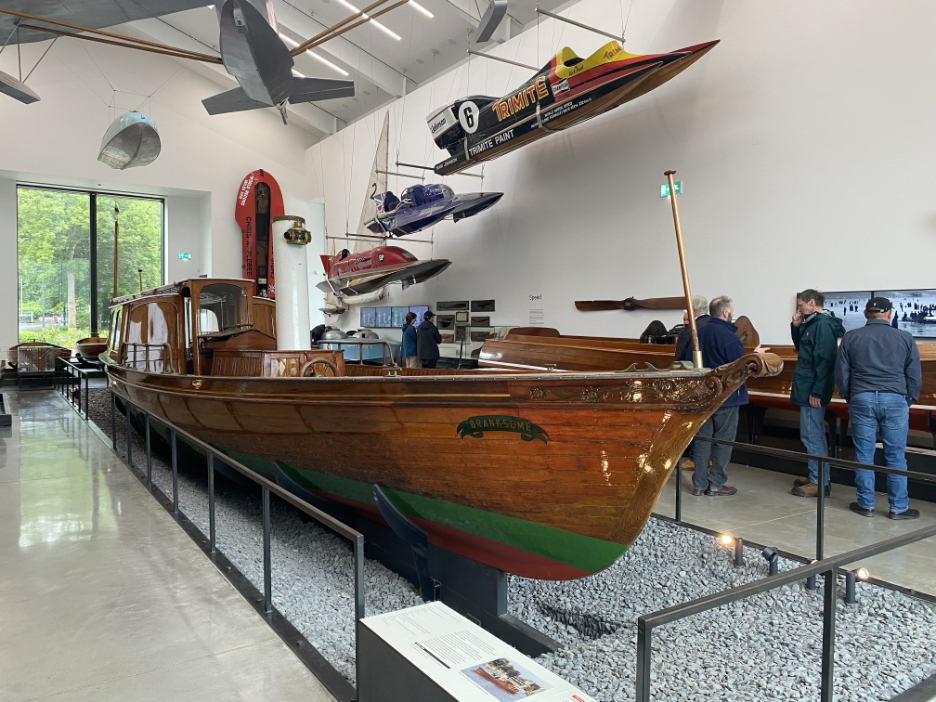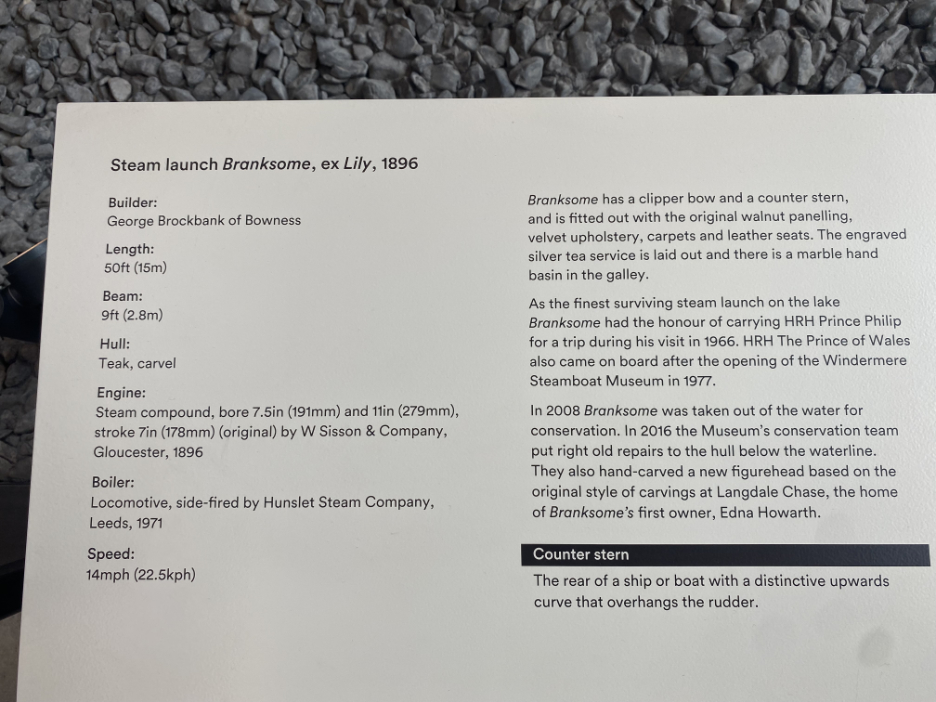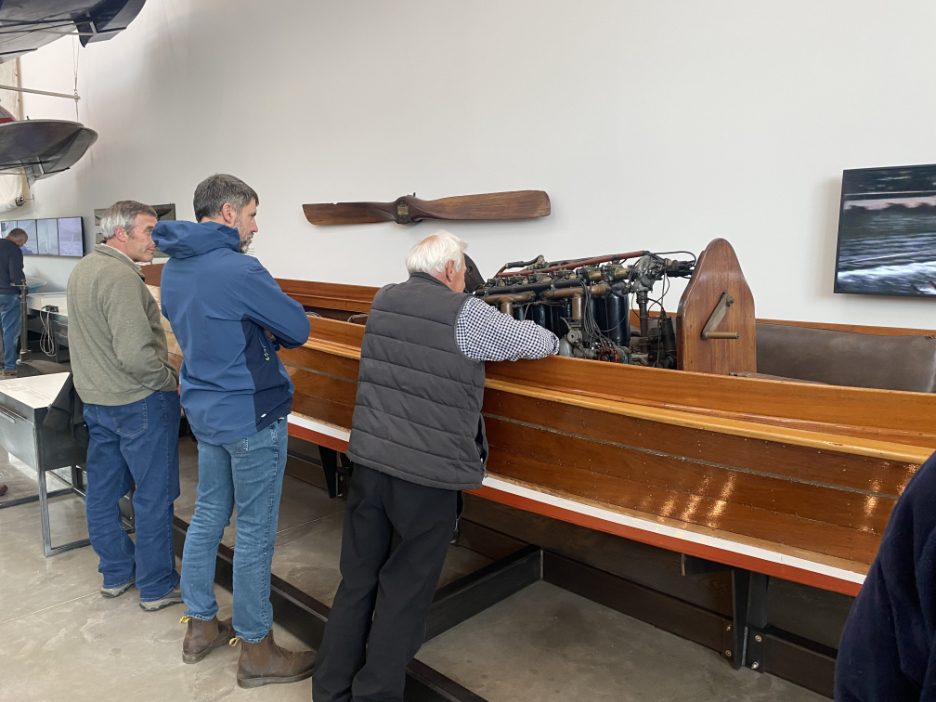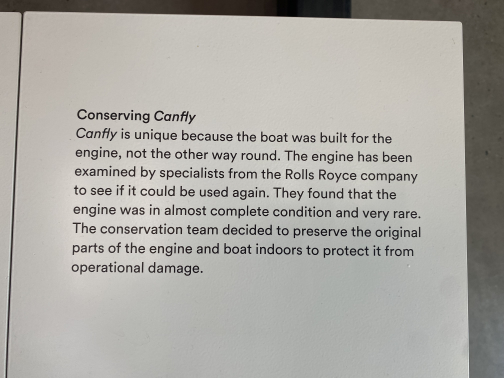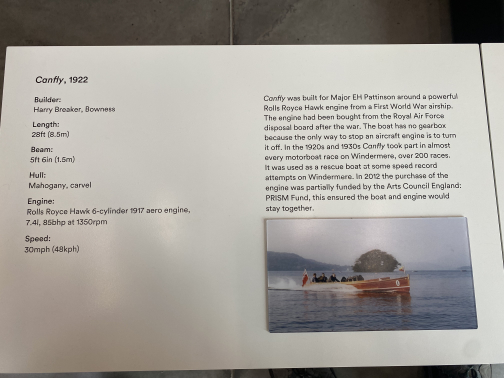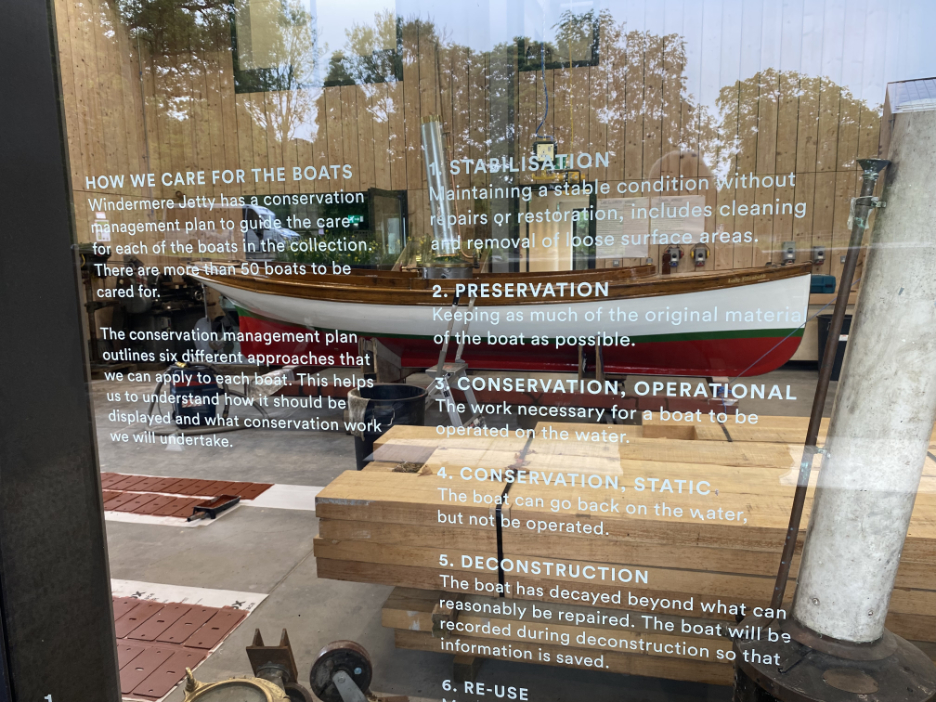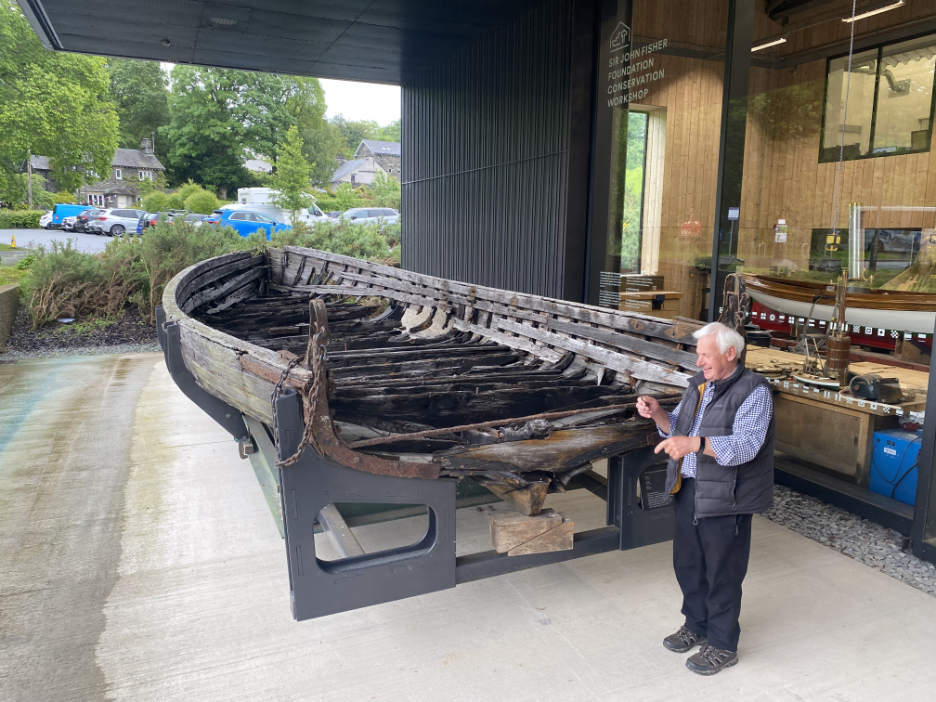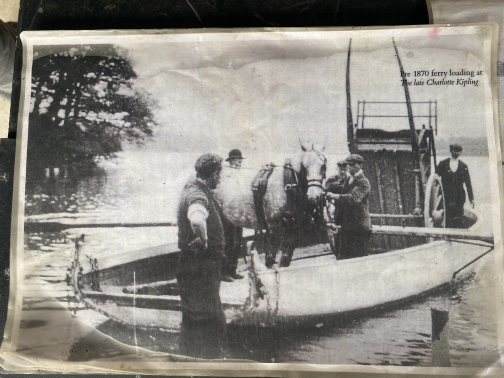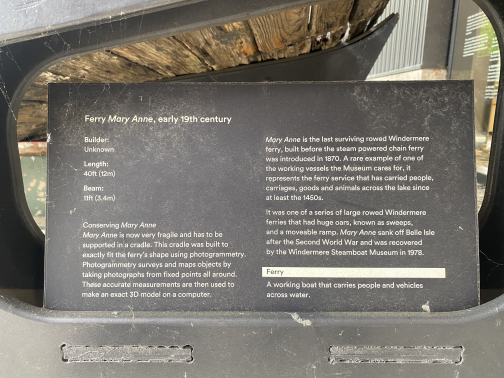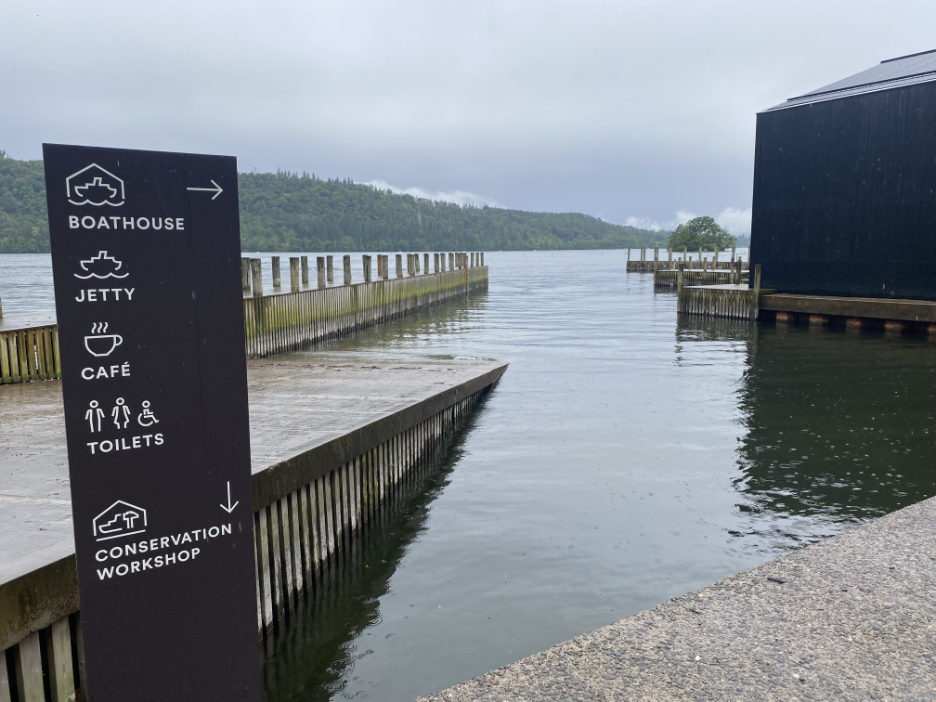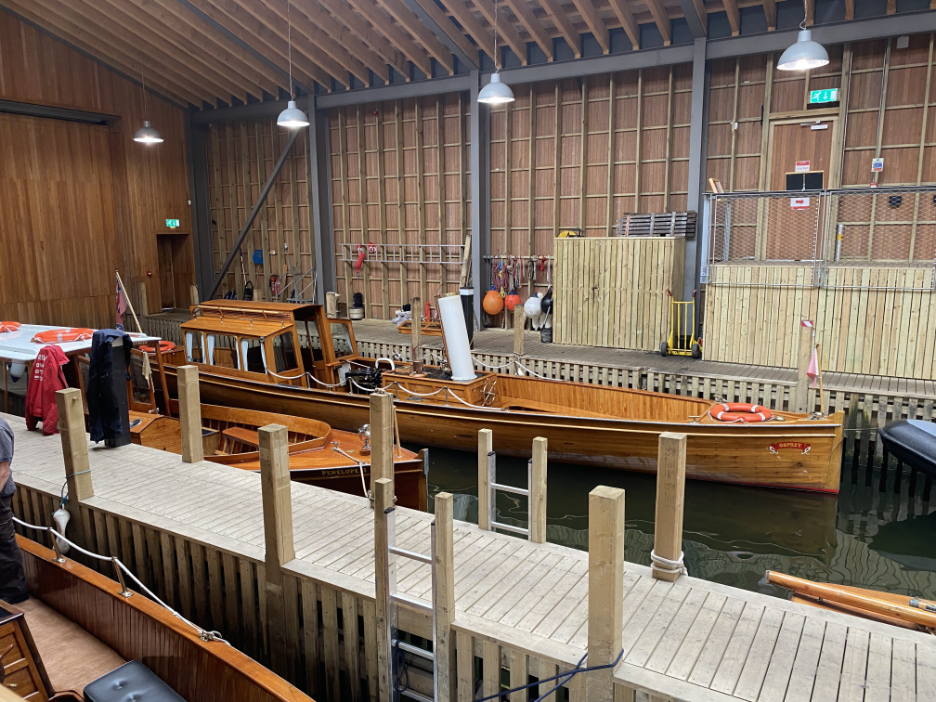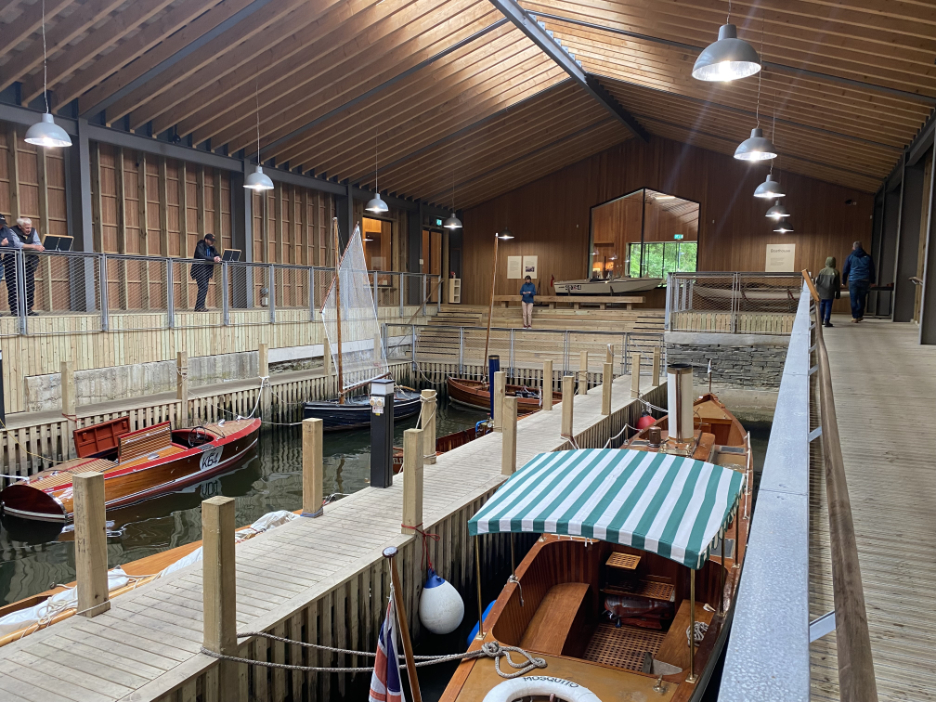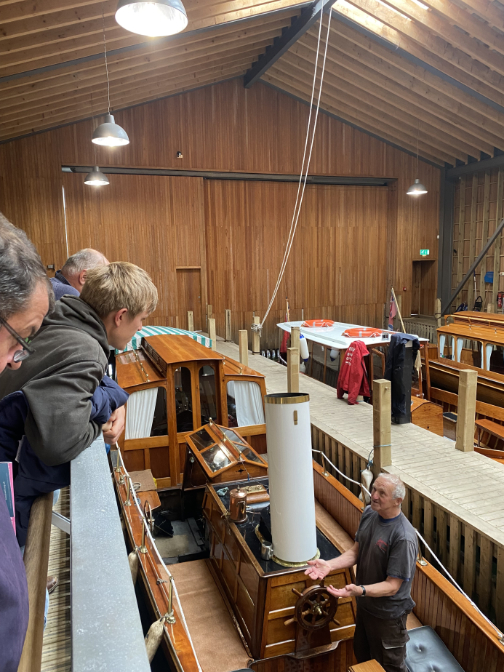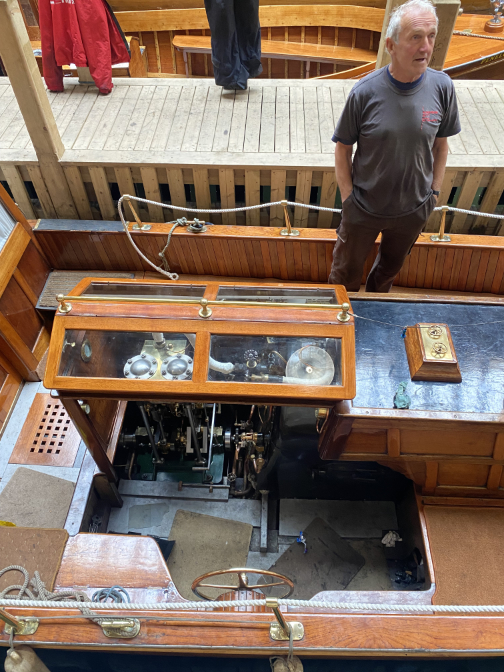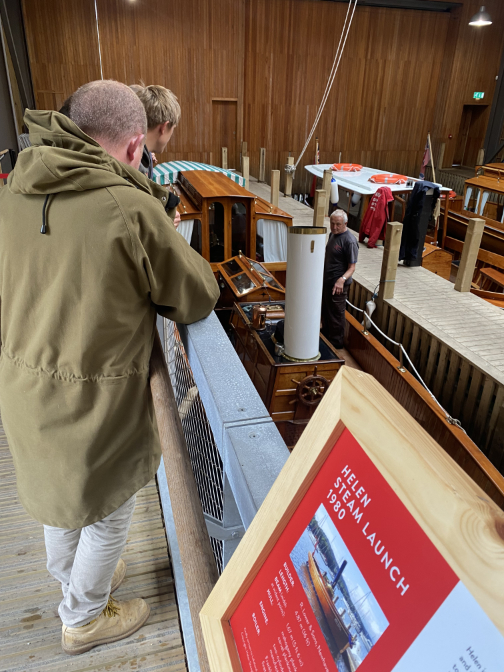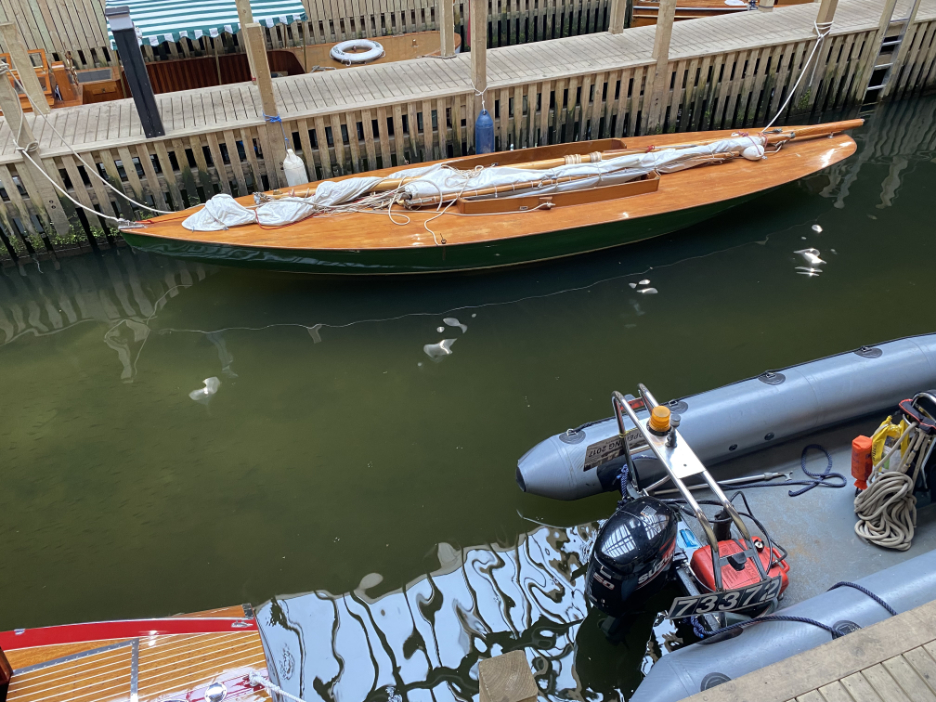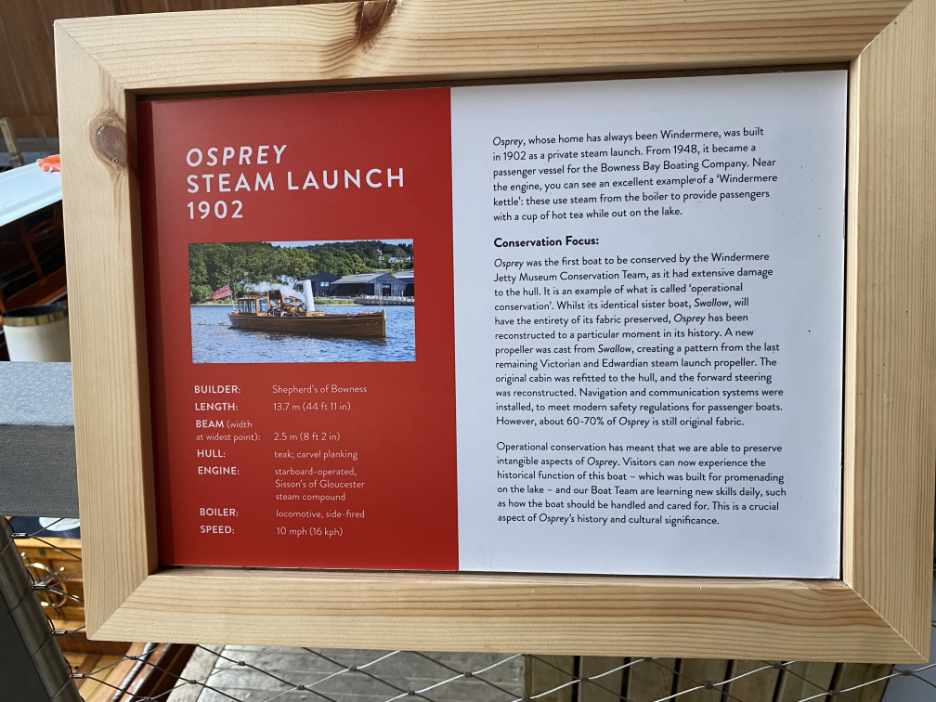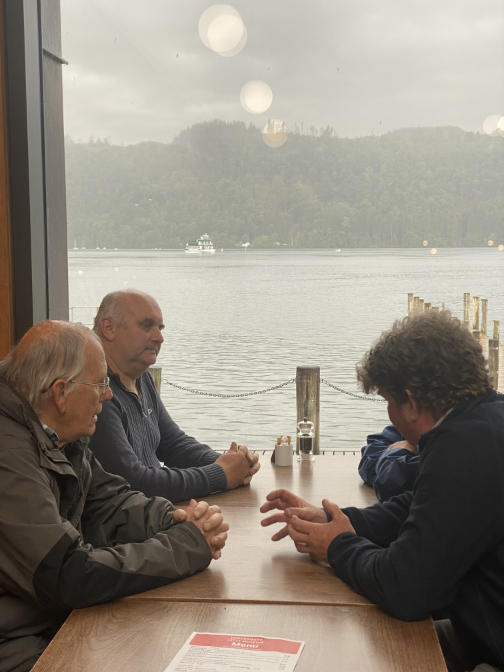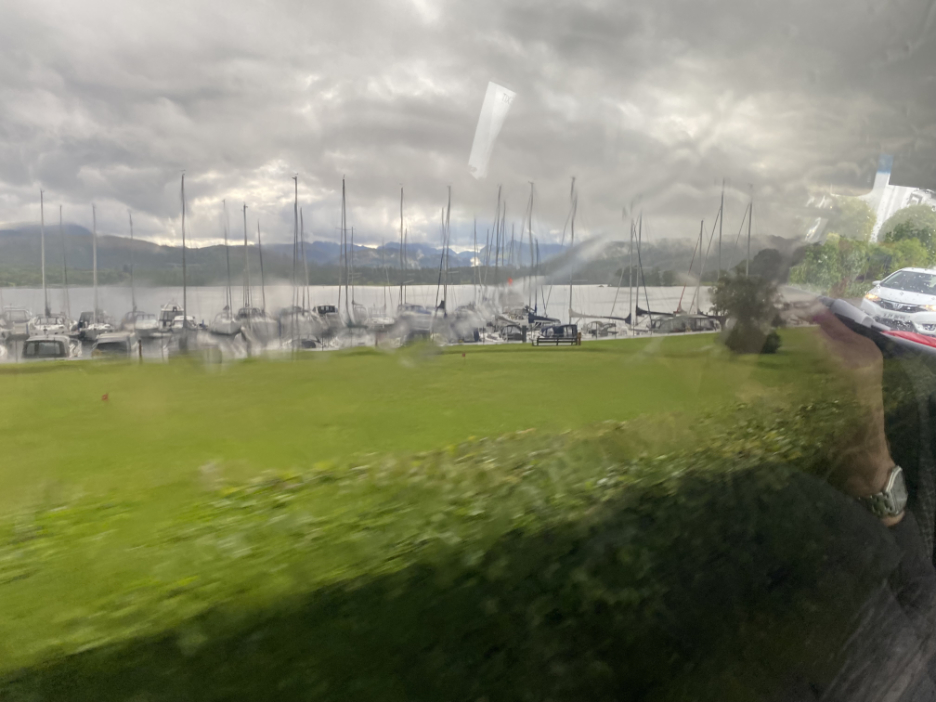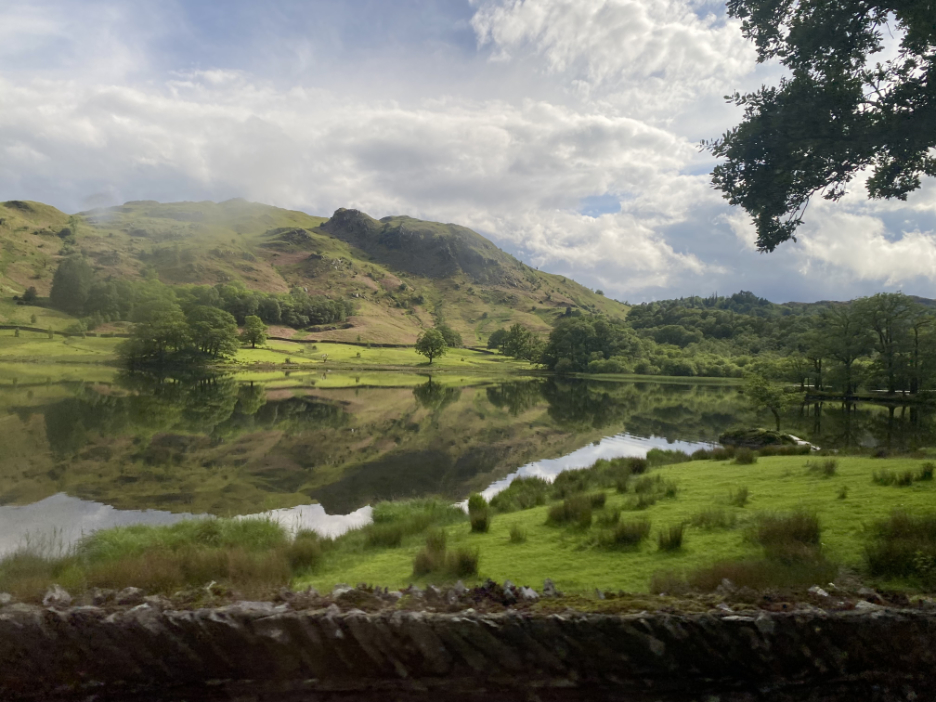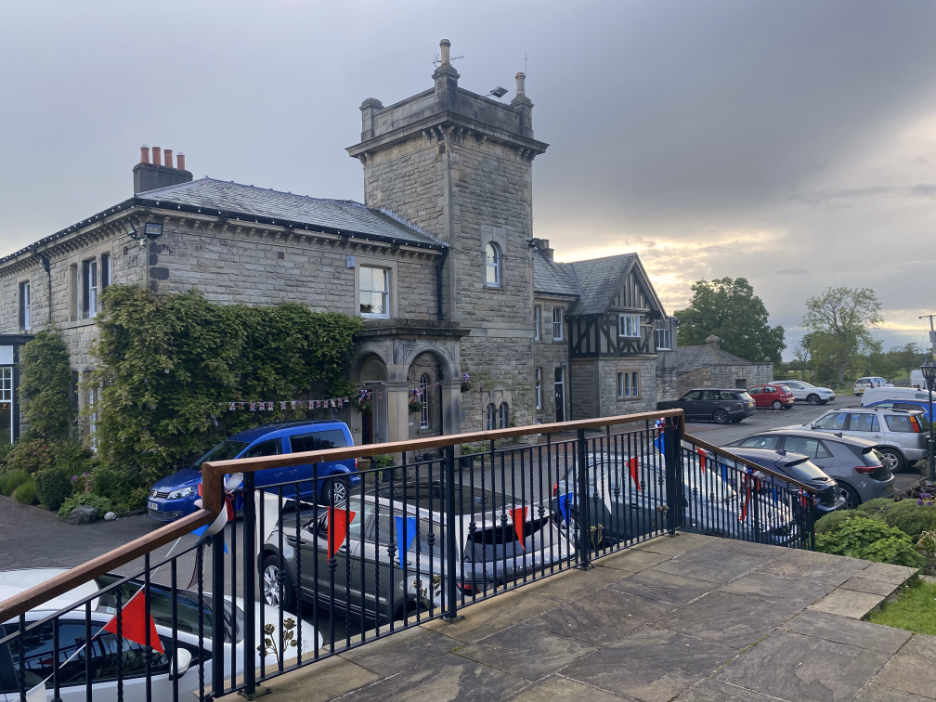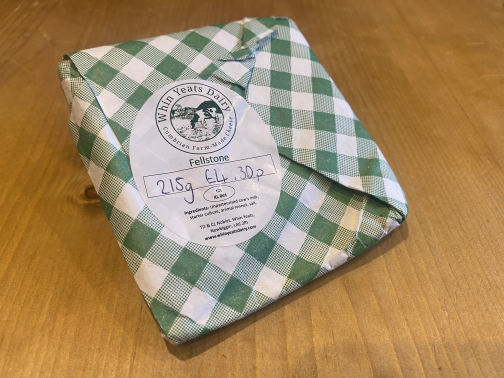|
|
||
Remember: Press F11 for a
full screen view of this page. |
Web Counter when published 1
996 890 |
|
" Loweswater Farmers Summer Trip 2022 " Date & start time: 31st May 2022. 8.30 am start. Location of Start : Hundeth Hill Hotel, Vale of Lorton, Cumbria, Uk. ( NY 142 288). Places visited : Whin Yeats Farm, The Plough Inn, Windemere Boat Museum, and back. Walk details : Transport by Reay's Coaches . . . with a big thanks to Julie, our driver. Walked with : Myself and fourteen other members of the group. Weather : Overcast, rain later (but not a great problem).
|
© Crown copyright. All rights reserved. Licence number PU 100034184. |
|
The Loweswater Discussion (Farmers) Group traditionally meet during the winter months for beer and a conversation, usually with a guest speaker, always at the Kirkstile Inn At this time of year the group tries to have a day out together, in order to visit someone else's farm and also include a place of general interest . . . and to fit in a few beers and conversation along the way of course !
Our Chairman William organises everyone onto the bus at the start of the day. We're starting and ending at Hundeth Hill Hotel, being local and also a nice place for a meal on our return at the end of the day.
We haven't met in this way due to "the plague" for a couple of years, so its nice to be back to normal. Ken's ever so pleased to see me taking the photos again, whilst the bad boys hide out on the back seats !
Our driver today is a very sociable and competent lady, Julie, and soon we are heading south on the M6 from Penrith in the direction of Kendal.
The Tebay Gap has the distinction, like Loweswater, of having a small woodland planted with an artistic shape. Ours is a complex pheasant outline, complete with varied tree colours, Tebay has a simple heart shaped woodland, no doubt with its own back-story.
We've left the M6 at Junction 36 and headed around the back of the prominent limestone hill known as Farleton Knott, that's close by the motorway. As we venture closer to our destination the roads get smaller . . . and smaller.
Still if the Council rubbish lorry can get through then so can we . . . and soon we're turning into Whin Yeats Dairy and Cheese Farm entrance.
A welcoming party awaits our arrival . . .
We are formally welcomed by Tom and Clare Noblet and their children, Beth, Lucy, Jess and James who have kindly offered to show our group around their farm and dairy complex. Tom and Clare has just one farm hand, Jack, who also does day-release at agricultural college. The guy in the middle here is George, one of our group that used to work here on Whin Yeats Farm, and who suggested today's visit. The farm is run in partnership with Max & Jenny Burrow, the long-time owners of the property.
Introductions made, we are invited to make a start with a look at at their dairy and cheese making operation.
The manufacture of cheese needs careful biological control and cleanliness, so we are offered plastic boot coverings so as to avoid any outside mud or dirt being carried into the dairy. Inside the room a wide bench halts our progress, but it divides dirty from clean . . . and is also a great place to sit and sort out your shoes. [ Quick mention for farm-hand Jack outside in the wellies}
Tom and Clare have diversified the dairy farm into cheese making, in order to increase their business opportunities and profitability. We'll travel back through the manufacturing process in reverse order, but it'll make sense I hope.
This is the air conditioned cheese store where they mature their Wensleydale 'style' of cheese. It has that lovely, musty cheese shop smell and is slightly cooled which provides perfect conditions for the cheese to mature. The normal cycle from milk to finished product is approximately six weeks.
1000 litres of milk, about 10% of their production each day, goes into making about 30 of these large cheeses during each production cycle. The young cheese rounds are creamy-white and then develop that important mould and get darker over time.
Early experiments included wooden cheese stands , but now they use mostly metal shelving.
The cheese-cloth wrapped rounds should end up looking like this. Their first batches many years ago were occasionally hit and miss, but as time has gone on their consistency of manufacture has improved and the 'preferred' mould spores have won out over the rogues, so they now produce a wonderfully constant end product.
Moving forward in the building but back in time . . . The stainless Steel tank hold about 1000 litres of fresh milk to which they add a rennet which speeds up the curdling of the milk. As it solidifies, the square sieves on the wall are drawn through to cut the curds and speed up the maturing process.
The whey (milk without the fats) is drawn off and the remaining product scooped into the next machine.
The large square cone seen here on this table, normally sits on the top of the machine on the other. This then combs, squeezes and breaks up the curd further so that it can be easily fed and consistently packed into cheese cloth bags and in a round moulds. A simple overnight in a cheese press squeezes out the last of the whey and this creates a dry product ready for maturing. A three or so hour routine between milking and school runs provides enough time to make another batch to transfer to the storage racks next door. That's it . . . sounds simple when you say it quickly, doesn't it !
Tom works within the lowered floor of the pit, cleaning teats and attaching the clusters. The computer measures the milk yield for each cow and rewards them with personalised amounts of food cake supplements via the blue hoppers and shutes. There we good discussions about routines of cleaning and care, as they directly affects the quality of the milk and the cheese. They have about 200 head of cattle, of which about 100 are actively milking at any point in time.
In the corner of the milking parlour were some handily placed testaments to Tom and Clare's success in their farming venture.
Consistent success like this only comes with attention to detail. The certificate gained by Tom and his crew is actually in the name of the farm owners I mentioned, Mr and Mrs Burrows but we now know who does all the hard work.
The art of cheese making goes hand in hand with selling of course, so marketing is also an important part of the job.
The visit continued with a walk around the rest of the busy farm. The farm runs on spring water with a certain amount of mains water for key areas. Tom is also collecting rain water from the roofs for cleaning etc, and is thinking of increasing this collection in order to keep down costs.
The Whin Yeats Farm has been built on the side of the hill so the barns are staggered down the sloping yard. at the bottom is a flat area that they are in the process of improving.
To achieve such a wide flat area takes a great wall . . . and we were invited to look over . . . at the tops of the mature trees in the woodland below. At forty or fifty feet high, that's one heck of a wall !
. . . But it did give us a great view of the farm land around. Not all of it is Whin Yeats as there's another farm down in the valley, but they work many of the higher fields that we could see.
In true trip tradition we stop at a nearby hostelry for a spot of lunch.
Time for a quick Group photo today . . . twelve plus myself behind the camera. Hang on, there should be fourteen !
Neil and George were late out of the pub . . . but they shall remain nameless to protect their identity.
Everyone back in the bus, we're off again . . . to the big city !
Julie successfully negotiated Windermere and Bowness en-route to our next destination. - - - o o o - - -
The weather had turned a little damp as we arrive at the Windermere Boat Museum.
Opened just a few years ago, the museum has become the focal point of Wooden ship building and repair. It has an excellent display of boats and other craft that have been important to the life of the area.
We were very fortunate to have the services of Stephen Beresford, chief restorer and for this afternoon, guide to the group. He explained the layout of the museum and pointed out some of the exhibits that they have managed to display within it. We were able to gain greater insight as to the layout and running of the centre from his well chosen words.
Boats and accessories fill the floor, the walls and even the ceilings. Many of the boats and artifacts on display have been found in poor conditions, in fields or sunk beneath the waters of the lake and have been preserved and restored with the efforts of Stephen and the team.
Not just sailing boats, Windermere is famous for powered racing craft and flying boats.
Signboards relation to the famous Swallows and Amazons films.
Record breaking power boats and the steam yacht Branksome, built in 1896.
A stripped out boat, with more engine than seating . . . "The Canfly" was built around a Rolls Royce engine.
We move outside to look into the other large building on site. This was the workshop space where the restoration and repairs were done.
Outside was another relic that had been dredged up from beneath the waters of the lake. We're not talking about Ken but about the boat ! It looks like it is only part complete because it has no stern transom . . . but it never had one anyway. This was one of the old Windermere ferries that crossed the lake before the steam powered chain ferry was introduced in the 1870s. A ferry has been in existence since the 1450's and an old photo from the 1870s shows how this old boat carried animals and vehicles across the lake.
Outside into the rather inclement Cumbrian weather, to cross over to the adjacent lakeside boathouse.
Inside are floating exhibits and working examples of some historic wooden boats.
The Boat Centre also runs lake trips where they take the public out in some of these old boats on a short Windermere cruise.
Interestingly this boat has two steering wheels, one for the owner / skipper of the boat and a second tucked on the side of the boat, opposite the working heart of the engine, for the mechanic to quietly steer when the boss wasn't !
The un-rigged hull of a rather nice looking sailing boat . . . and a modern workhorse, the inflatable Rib boat used by the centre.
Time is moving on, and so must we. One last look at the boats, such as the 1902 Osprey, beautifully restored and operated by the boat team.
The current Windermere Swan Lake Cruiser can be seen out on the water, through the rain splattered window.
Same rain, different window, as we've boarded the coach and are on our way home.
The sun comes out as we pass Rydal Water. We're heading for Grasmere and Dunmail Rise.
Back to the start at Hundeth Hill Hotel. They kindly allowed our cars to stay in their car park during the day so we kindly allowed them to make us supper, paid for by us of course out of the cost of the trip.
- - - o o o - - - |
Technical note: Pictures taken with my Panasonic Lumix Gx8 Camera.
Resized in Photoshop, and built up on a Dreamweaver web builder.
This site best viewed with . . . perhaps a spoon of farmhouse chutney to complete the dish ?
Go to Home Page . . . © RmH . . . Email me here
Previous walk - 28th May 2022 - A Caldbeck Round Loes Sheila
A previous time with this group - take your pick from the list below.
Next walk - 2nd June 2022 - The Queen's Platinum Jubilee
- - - o o o - - -


